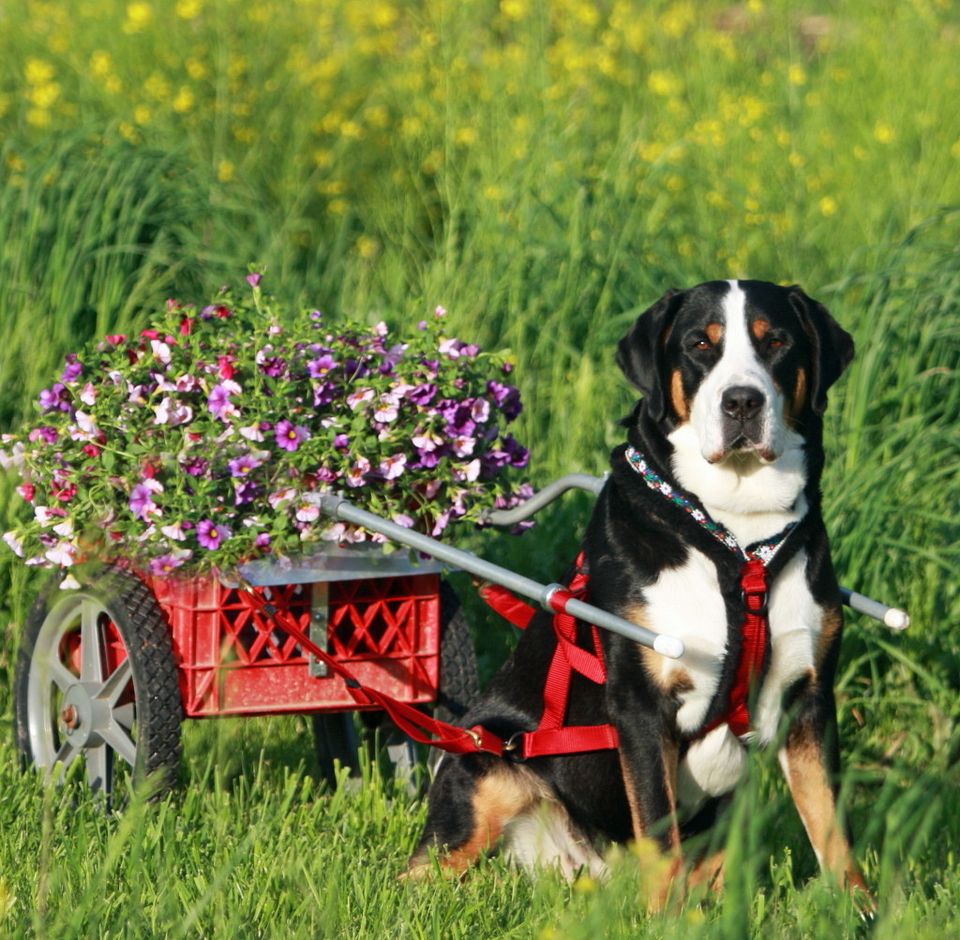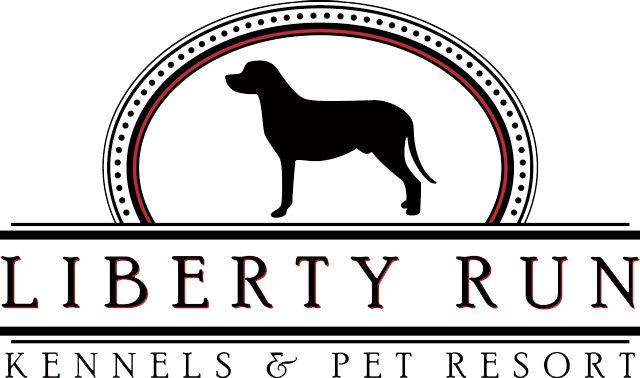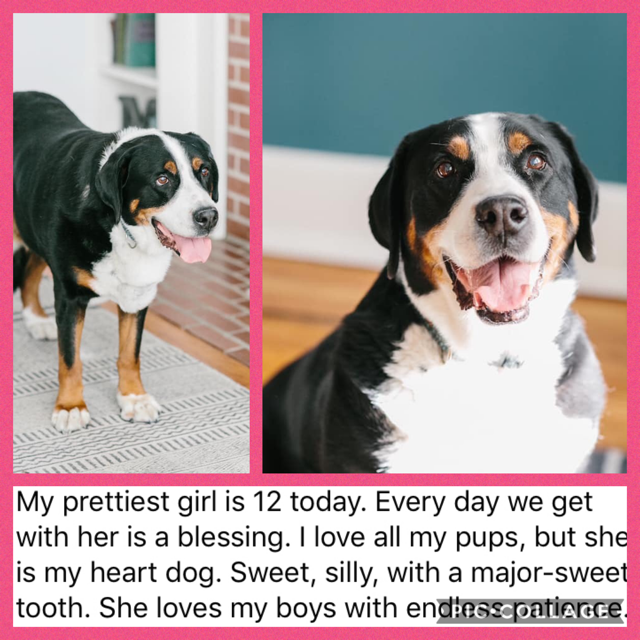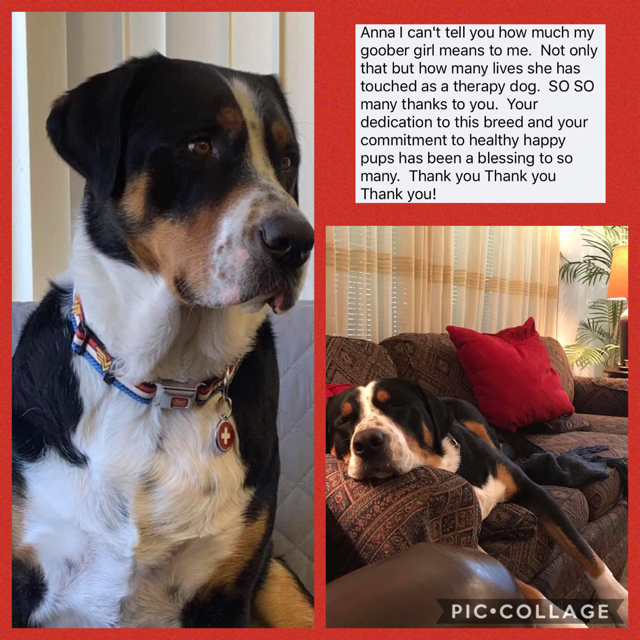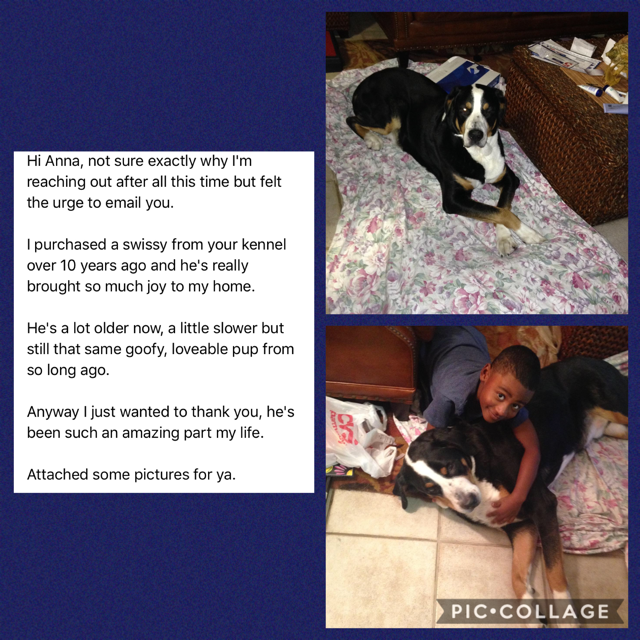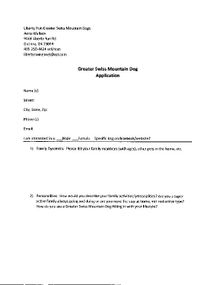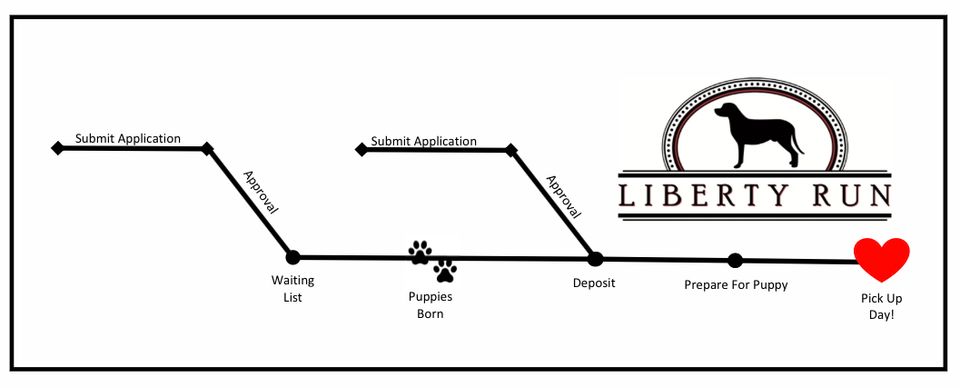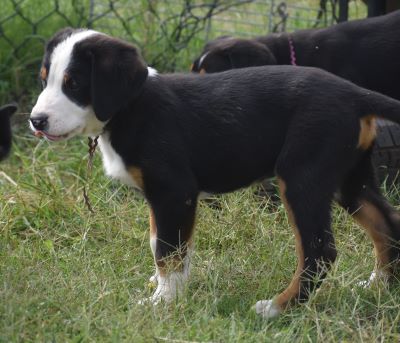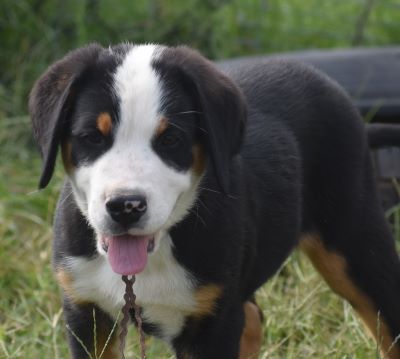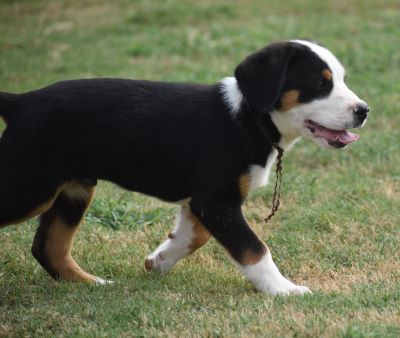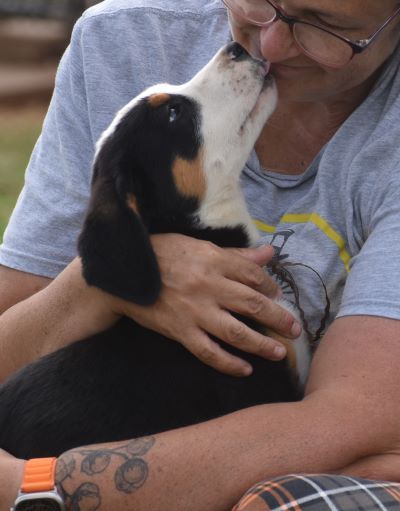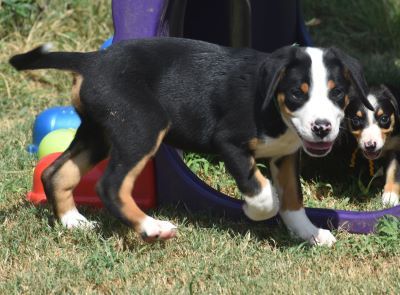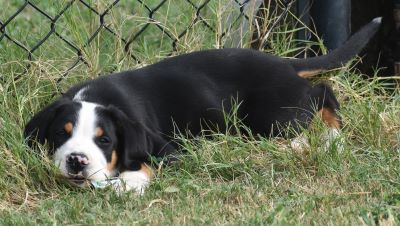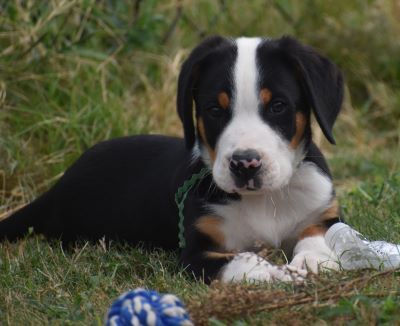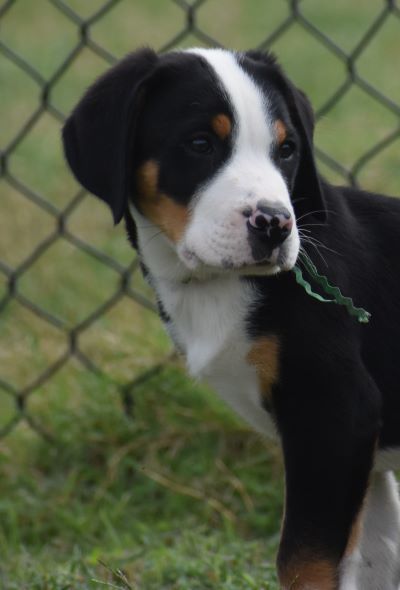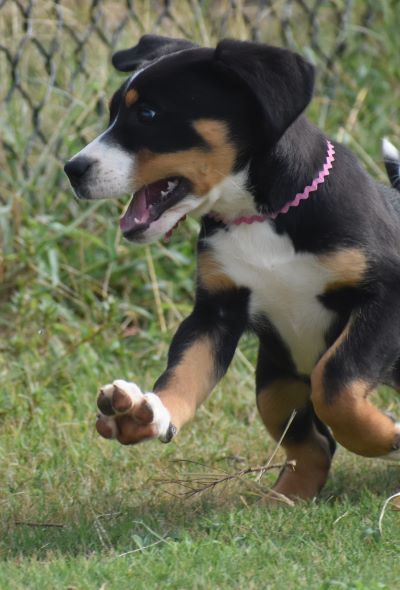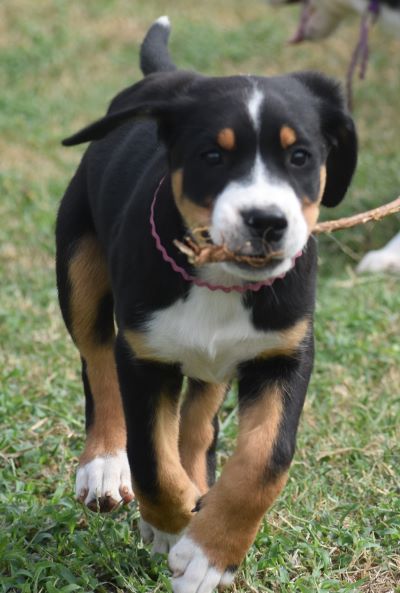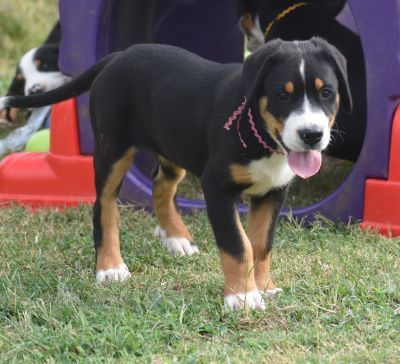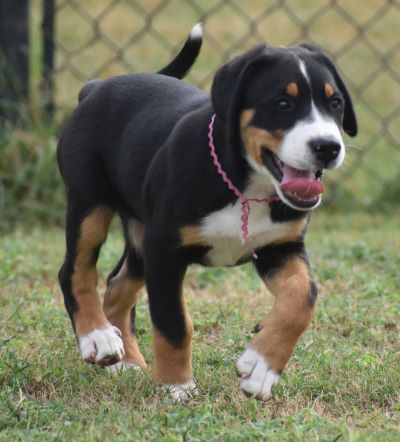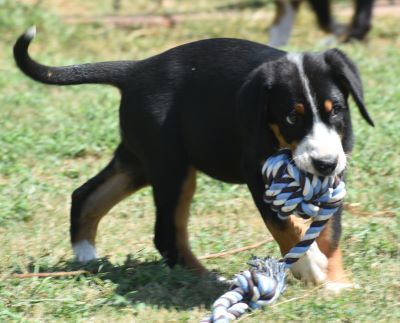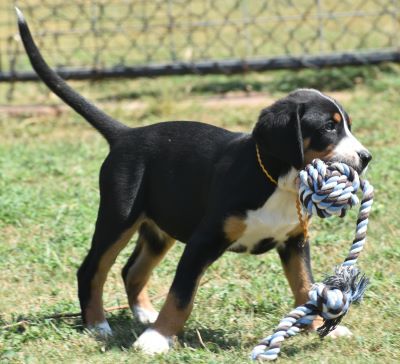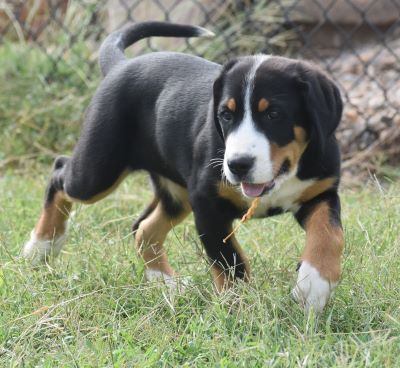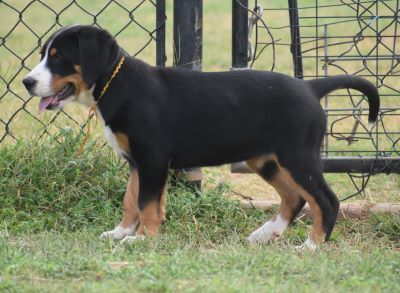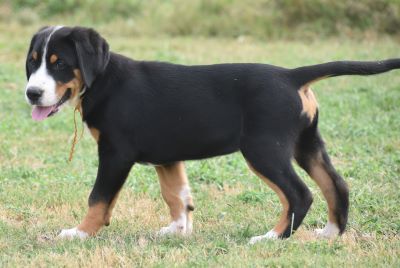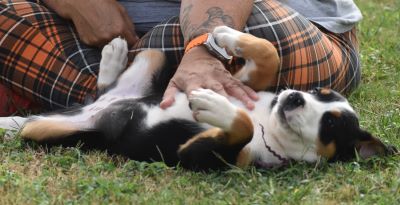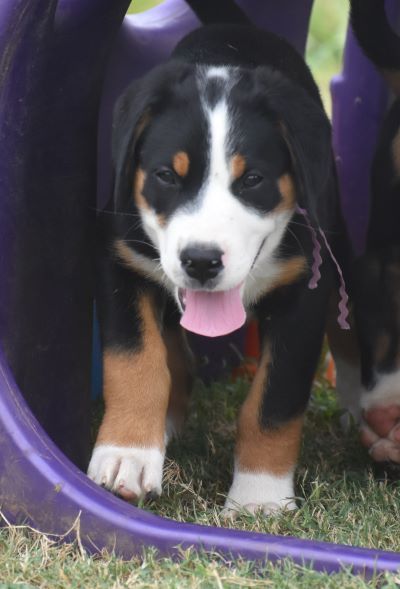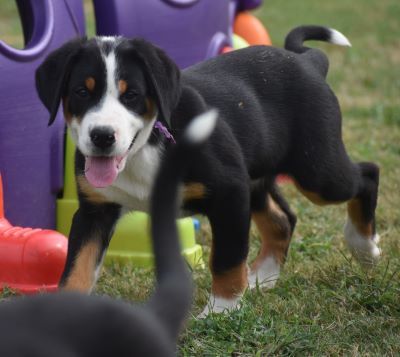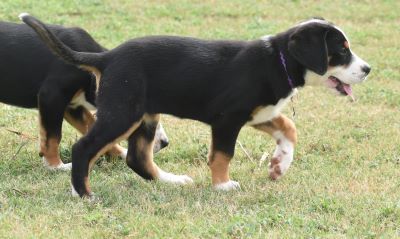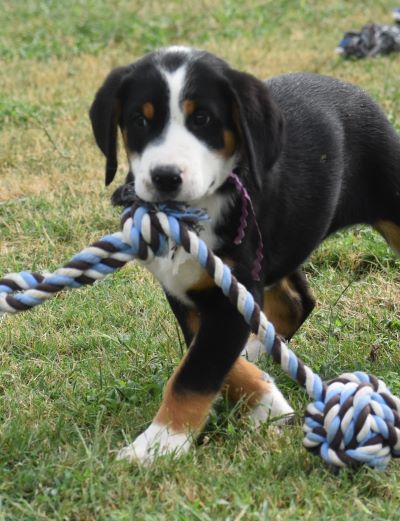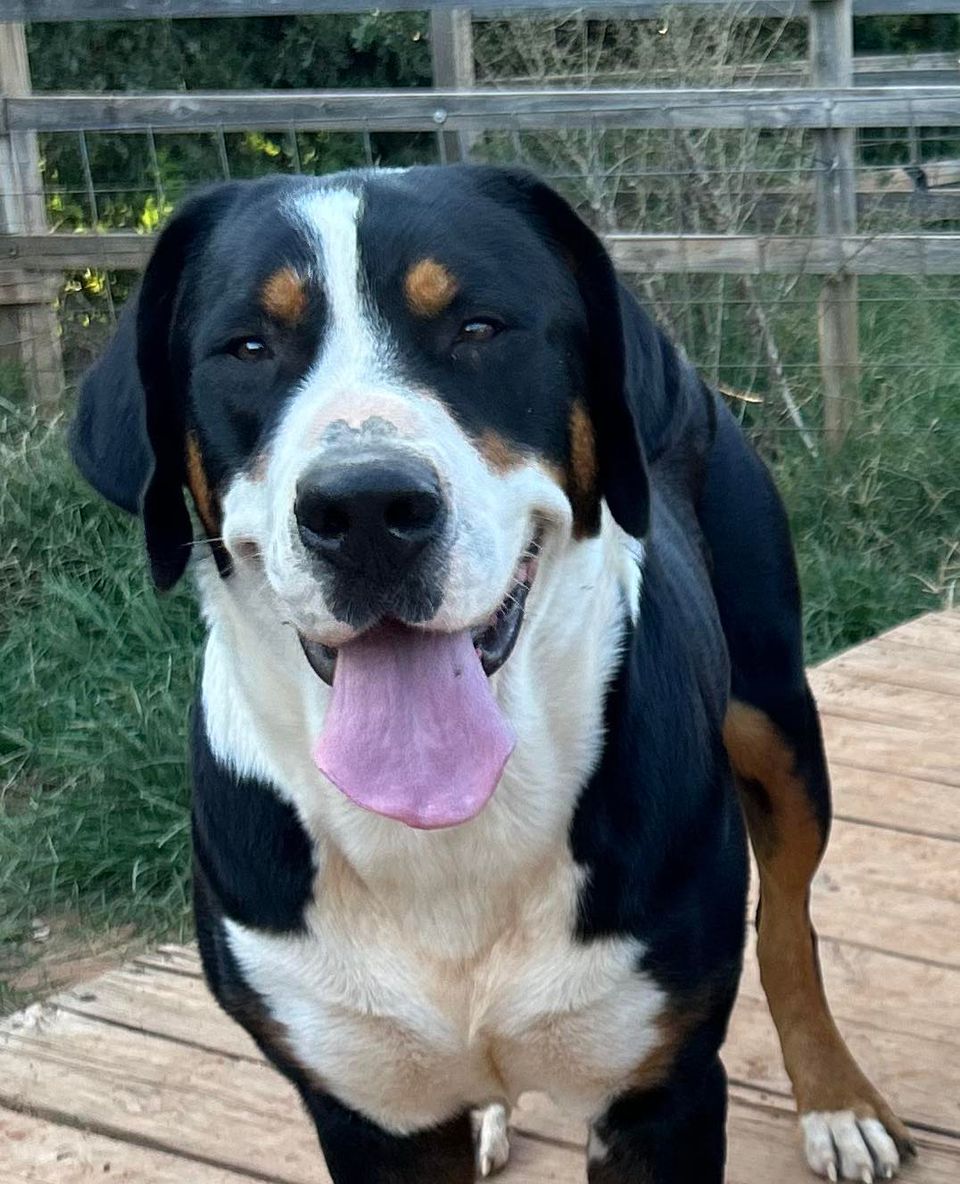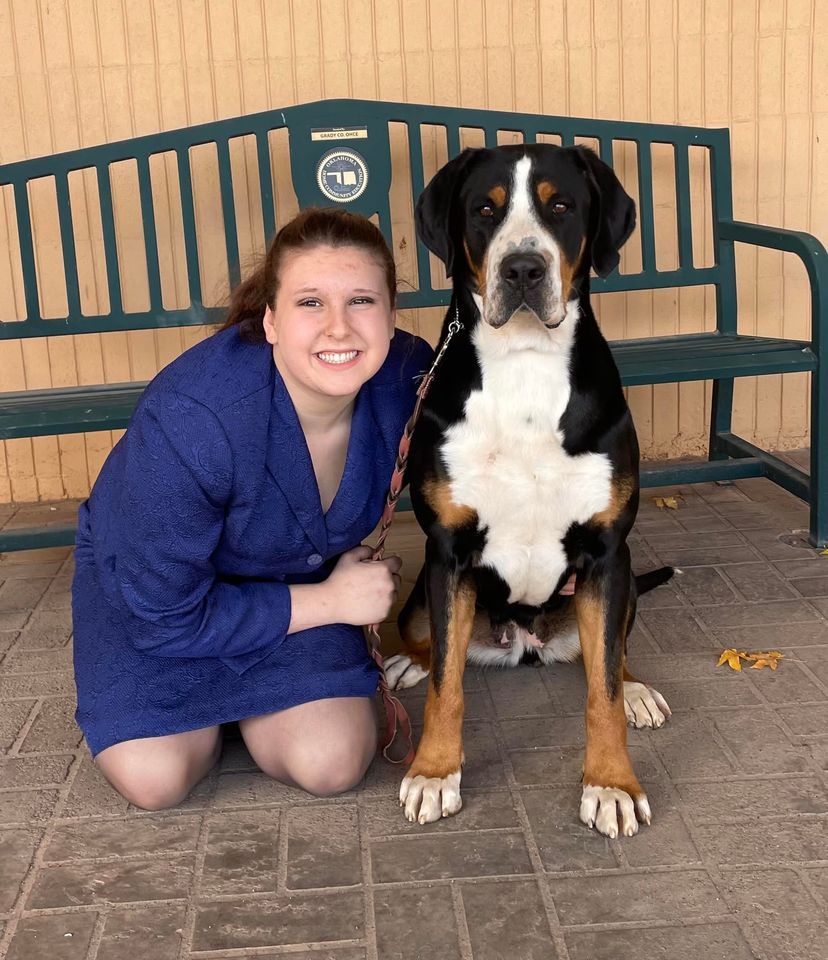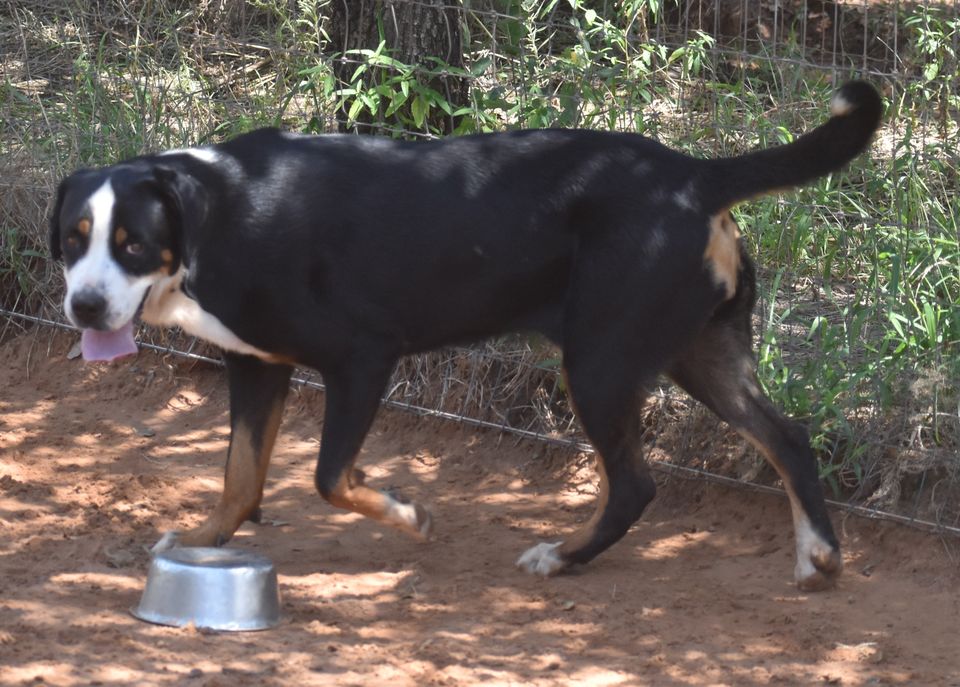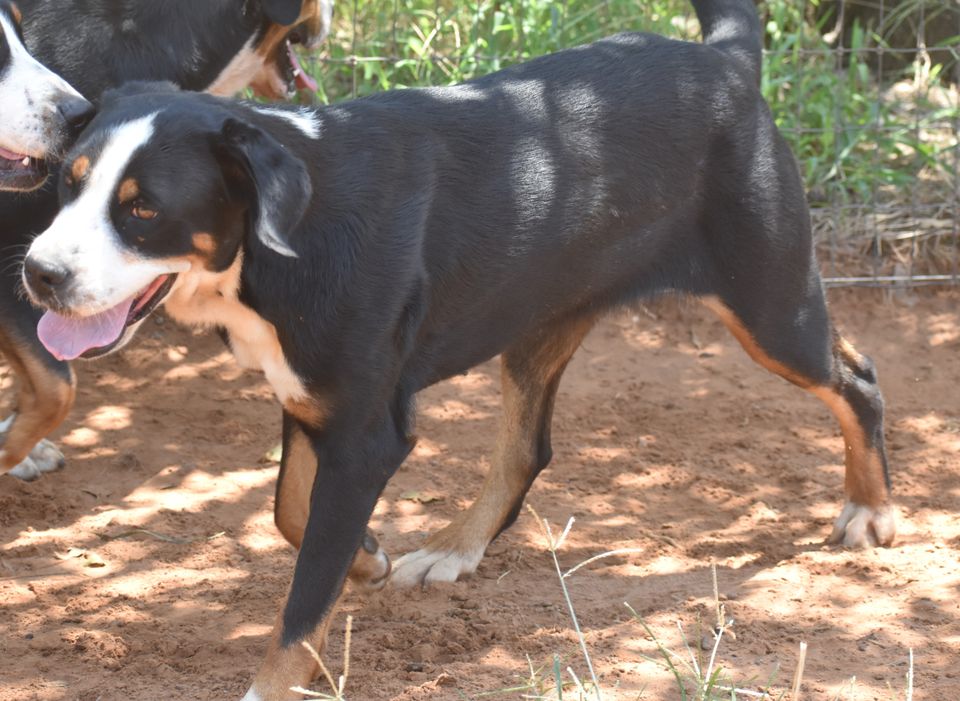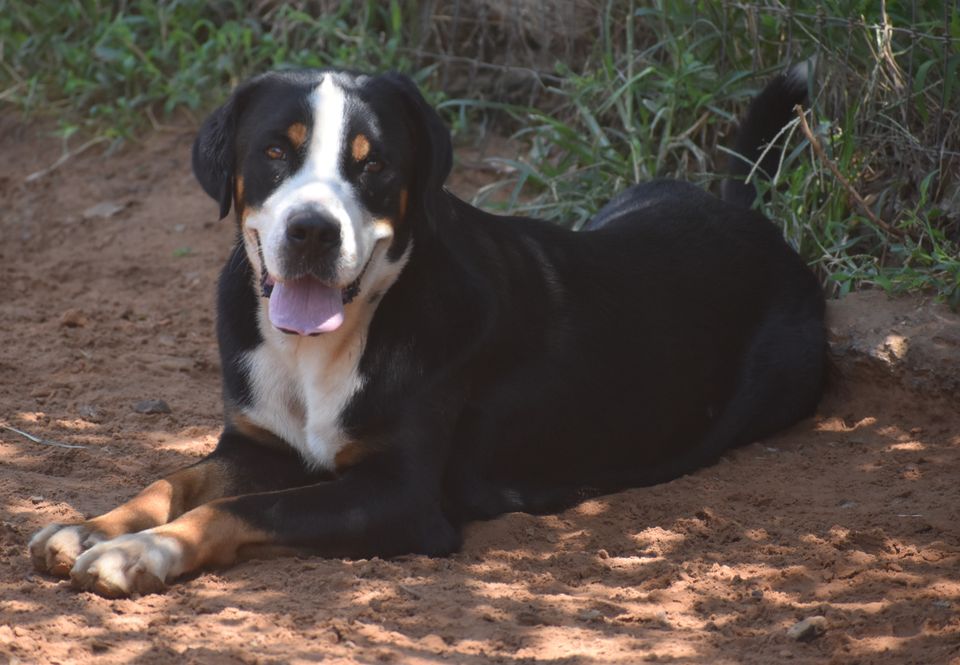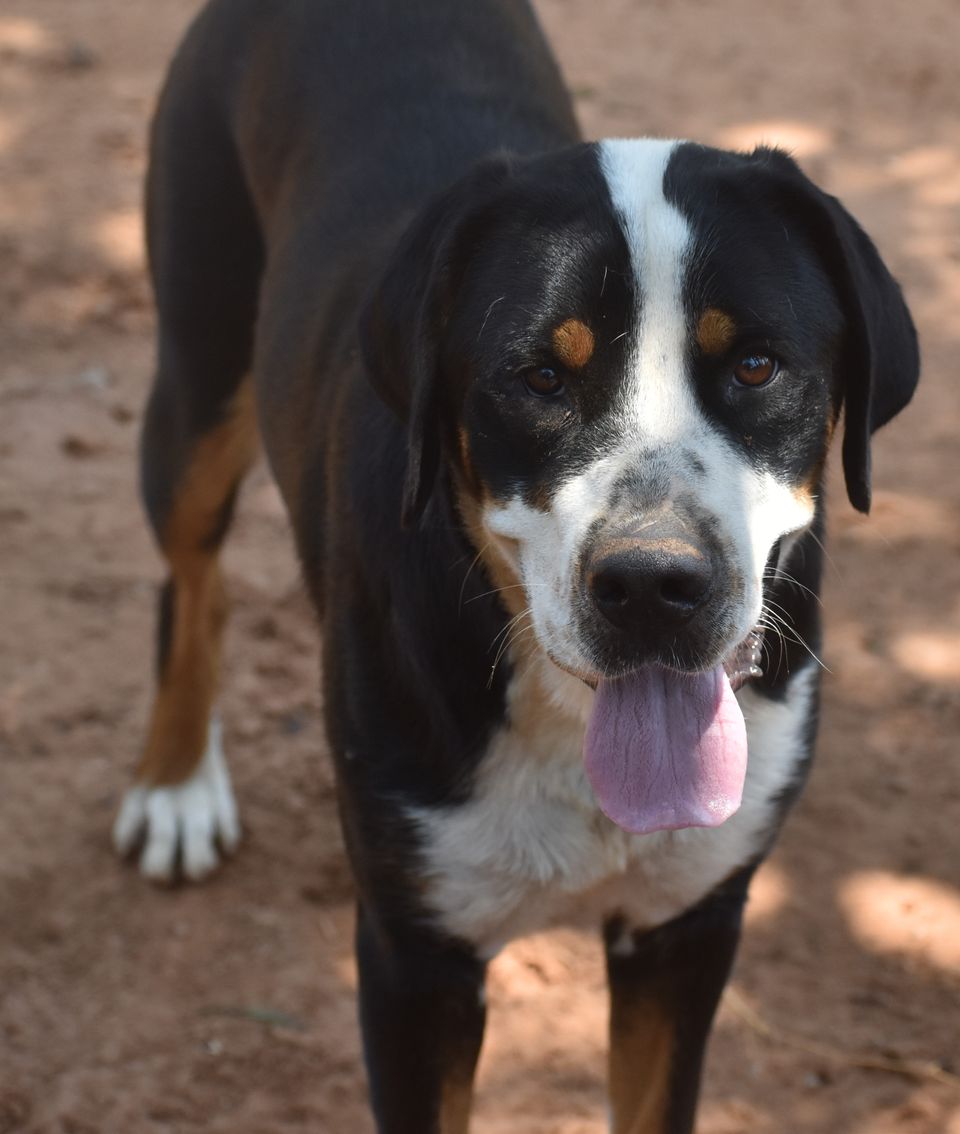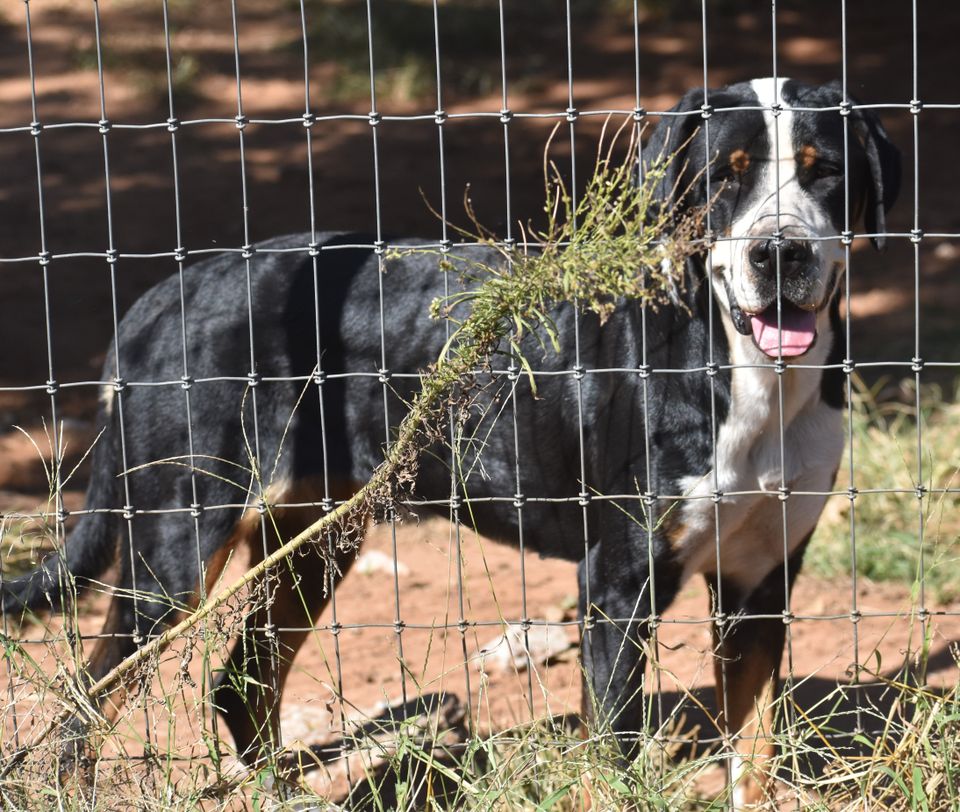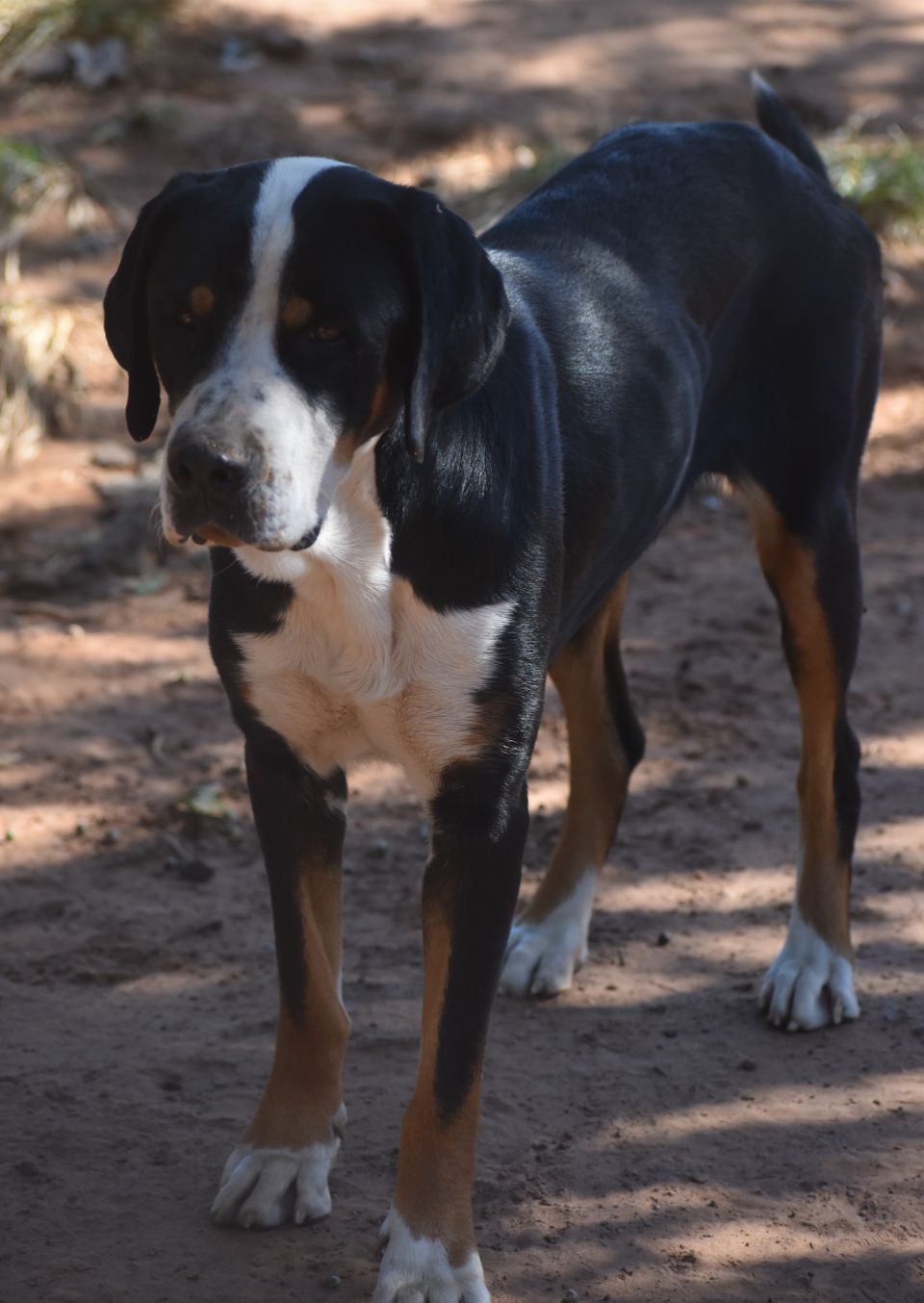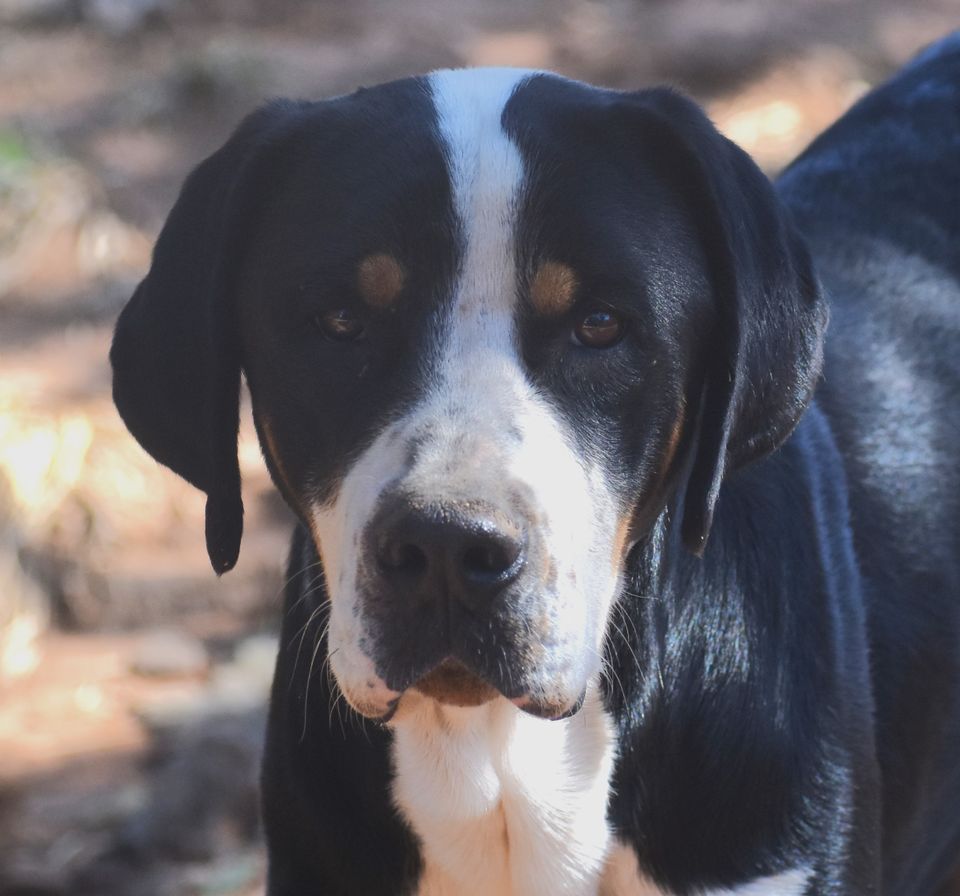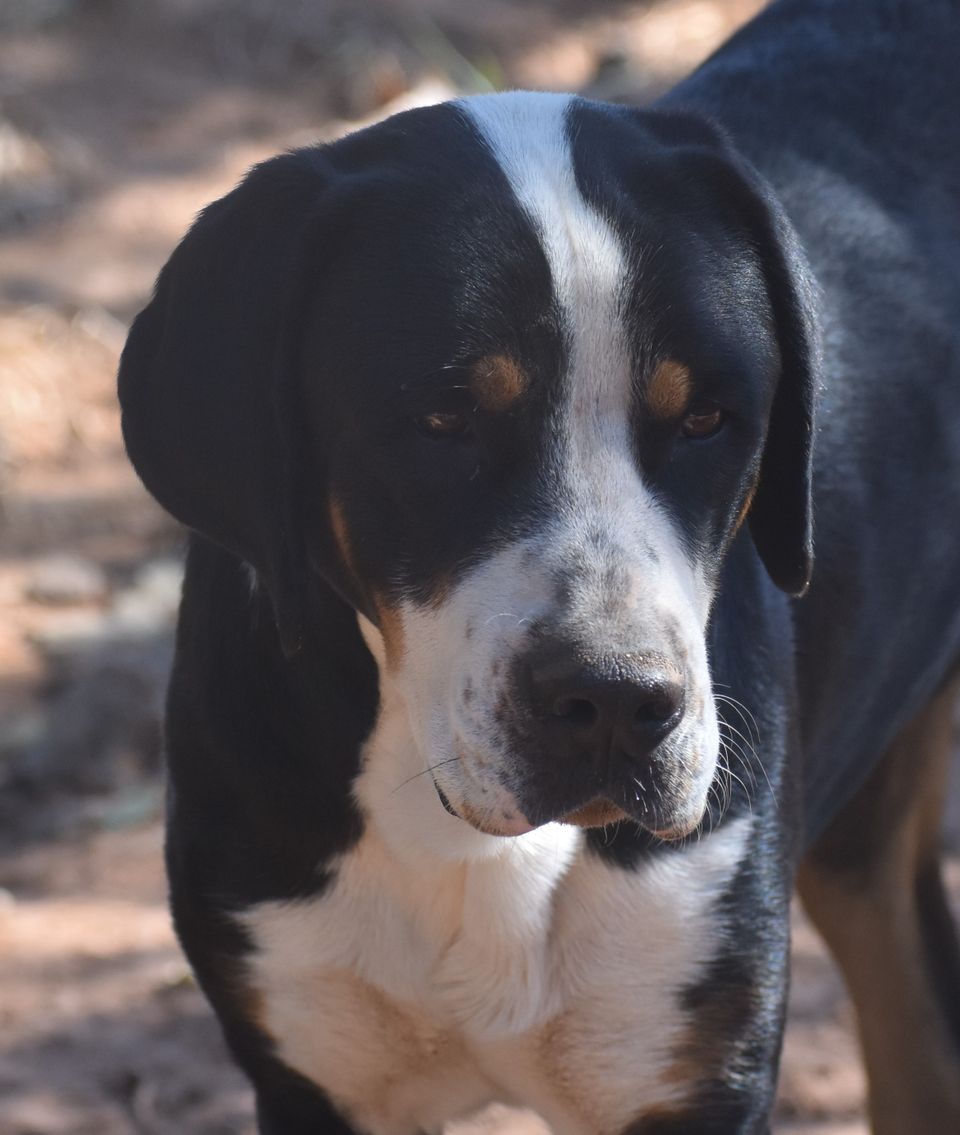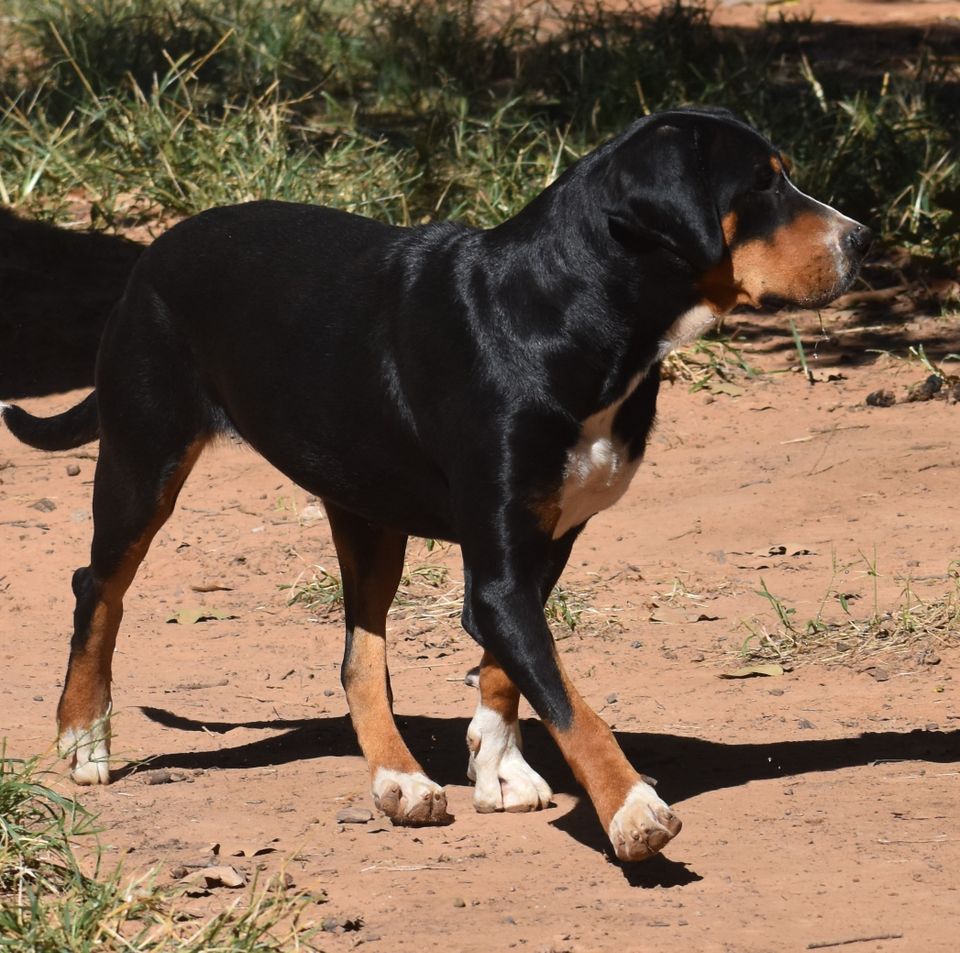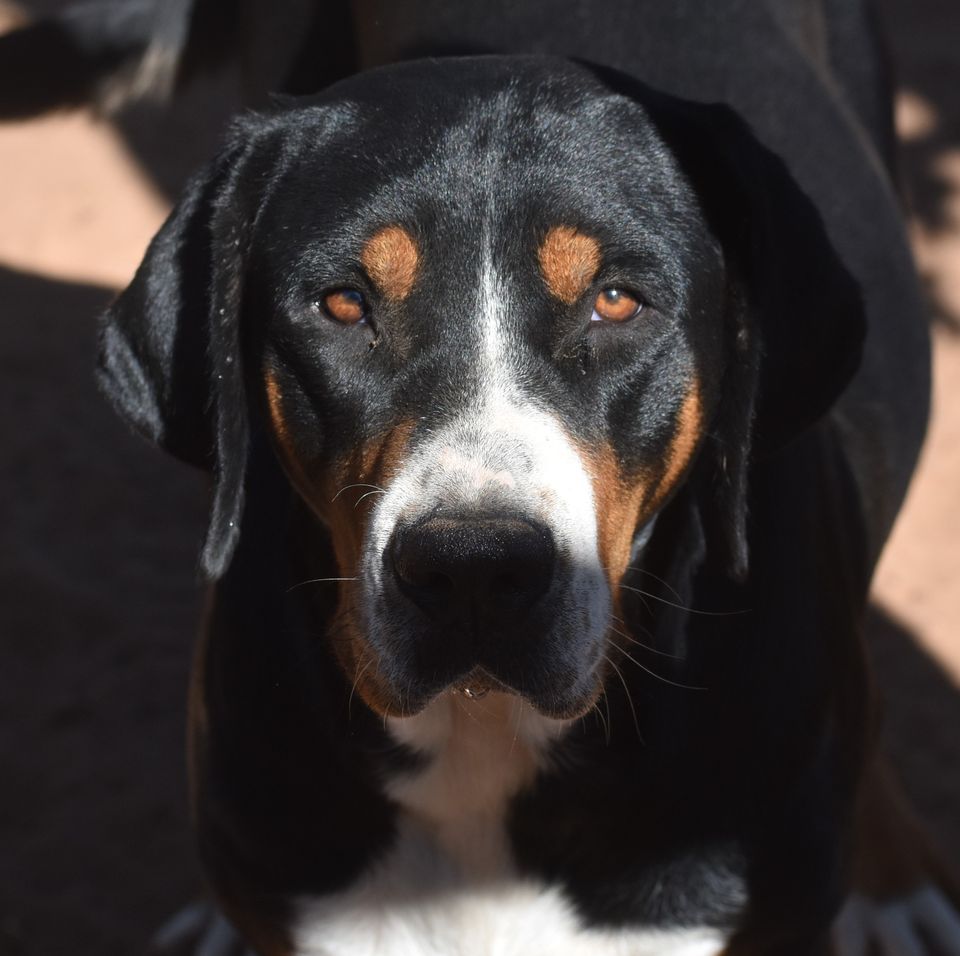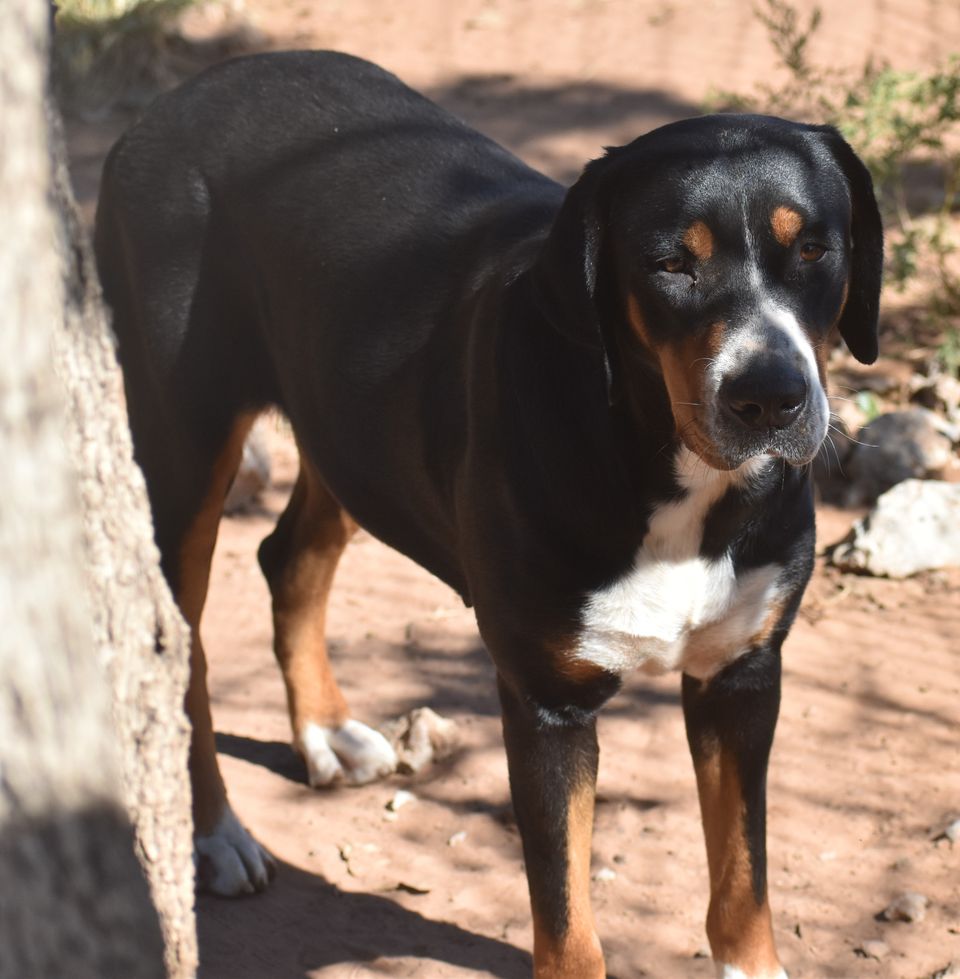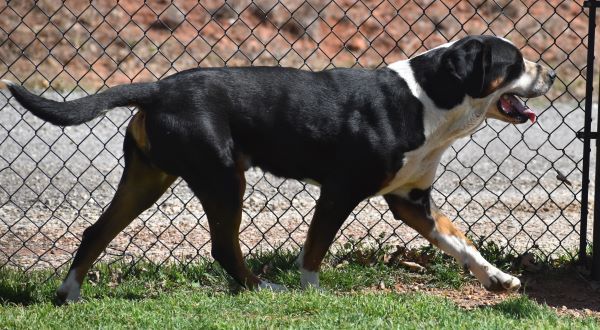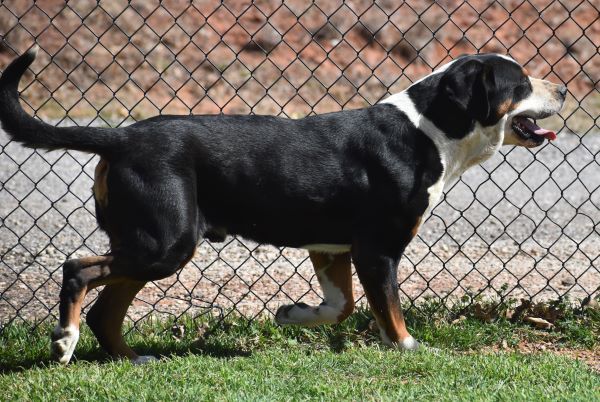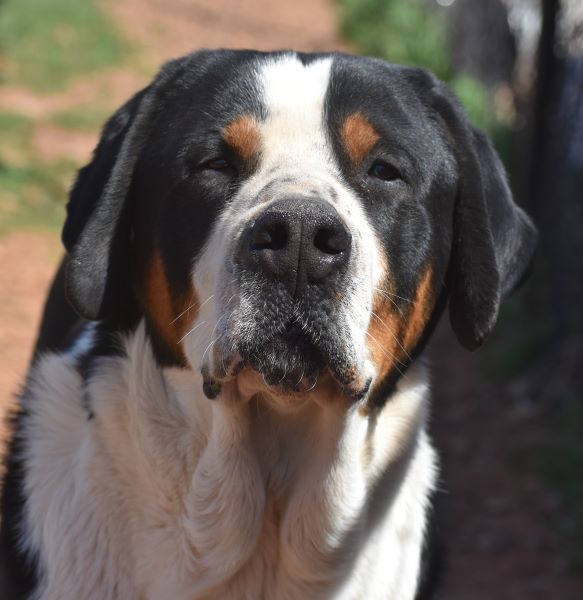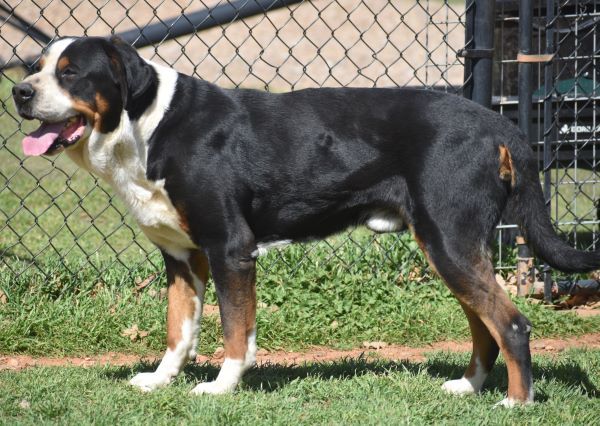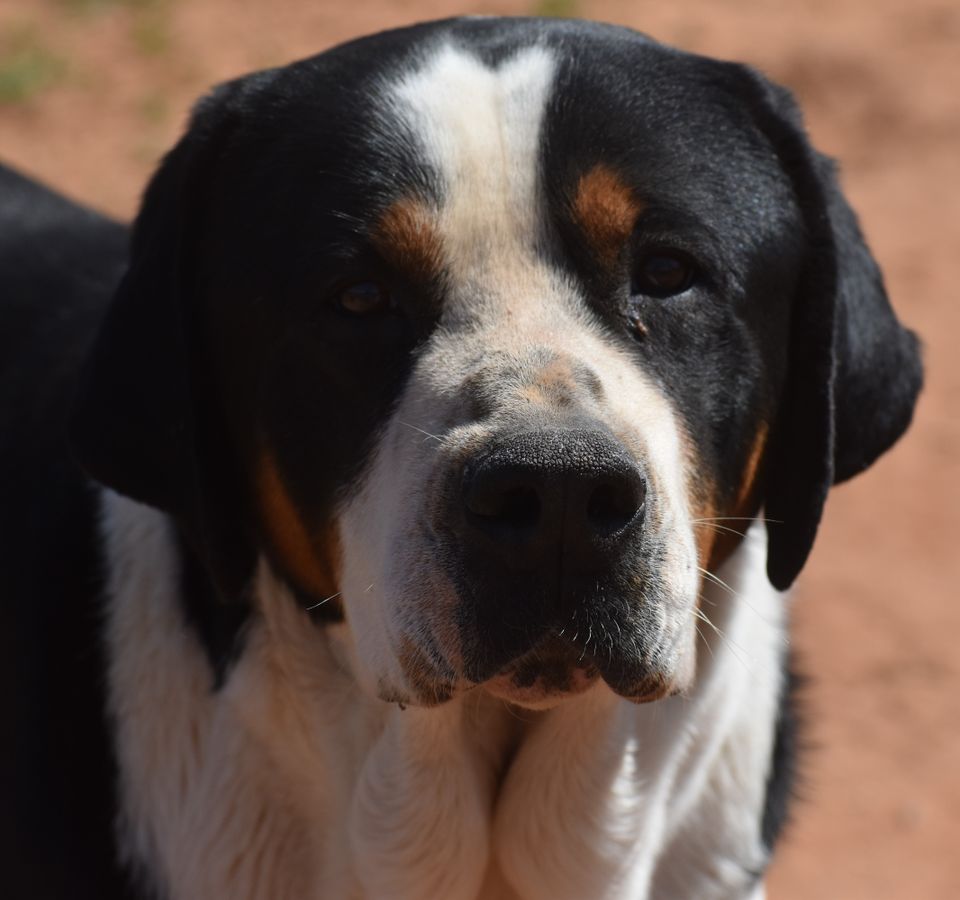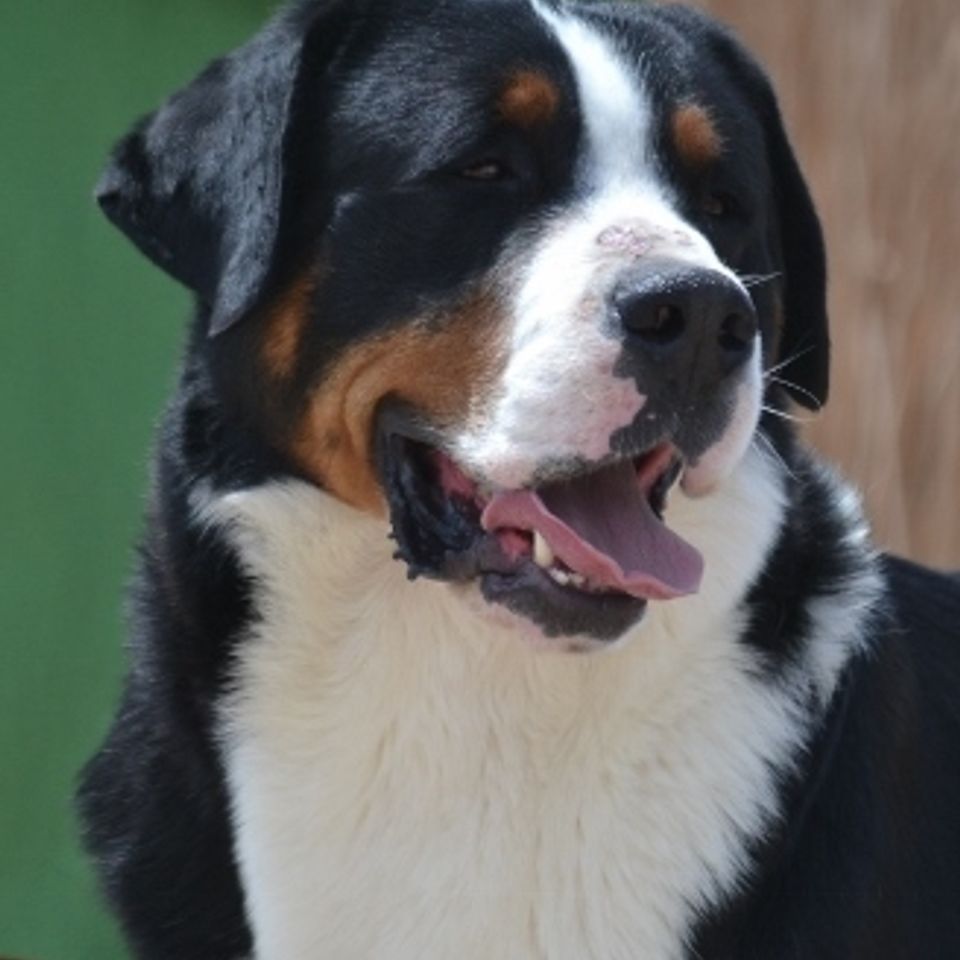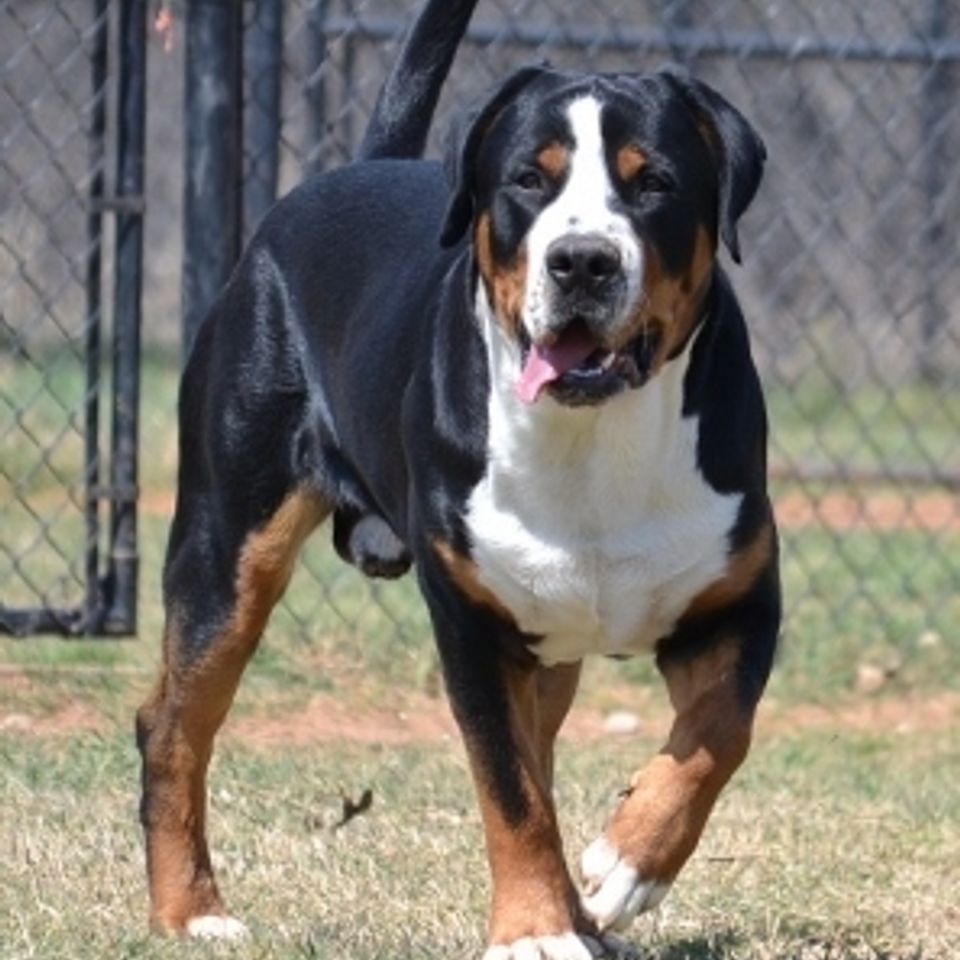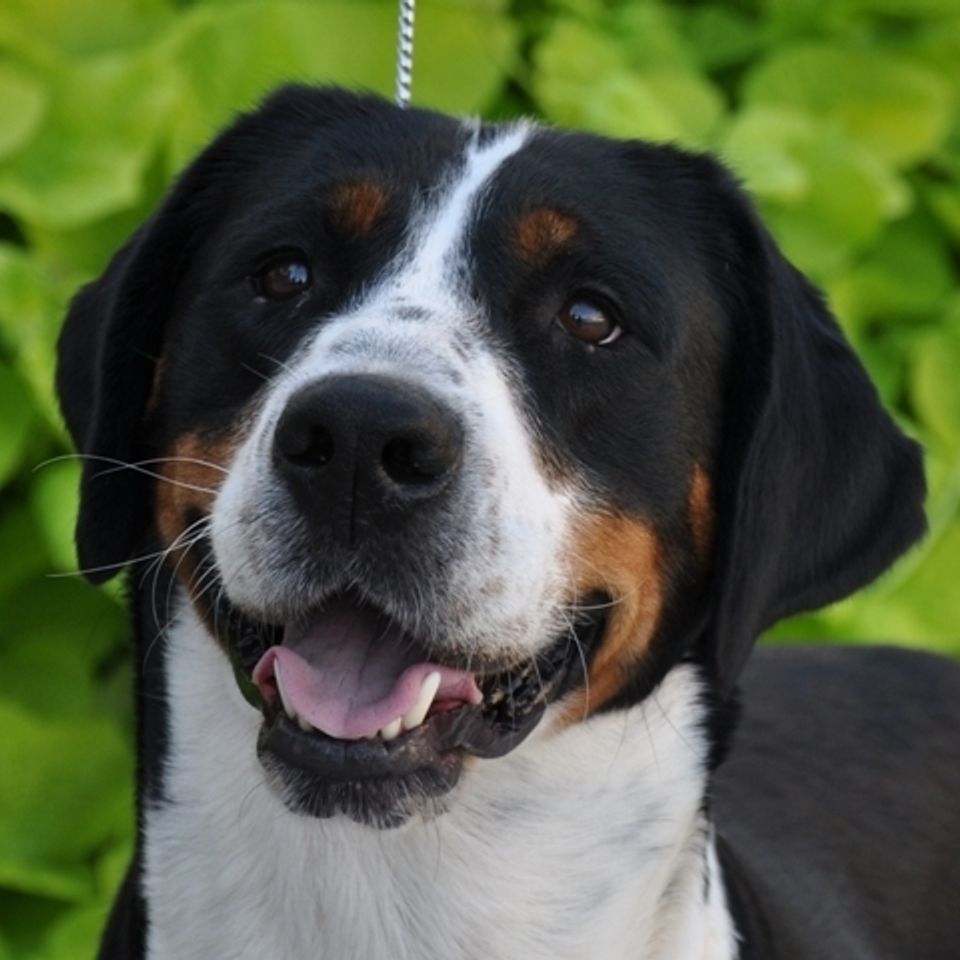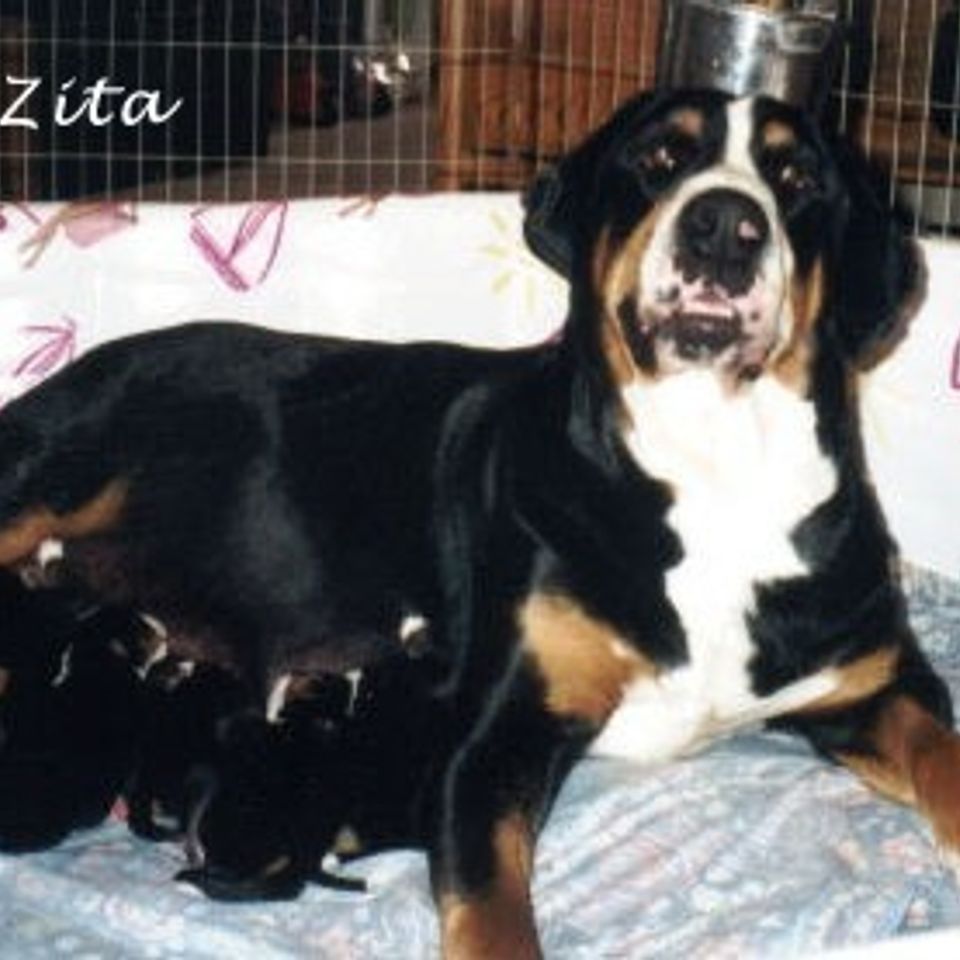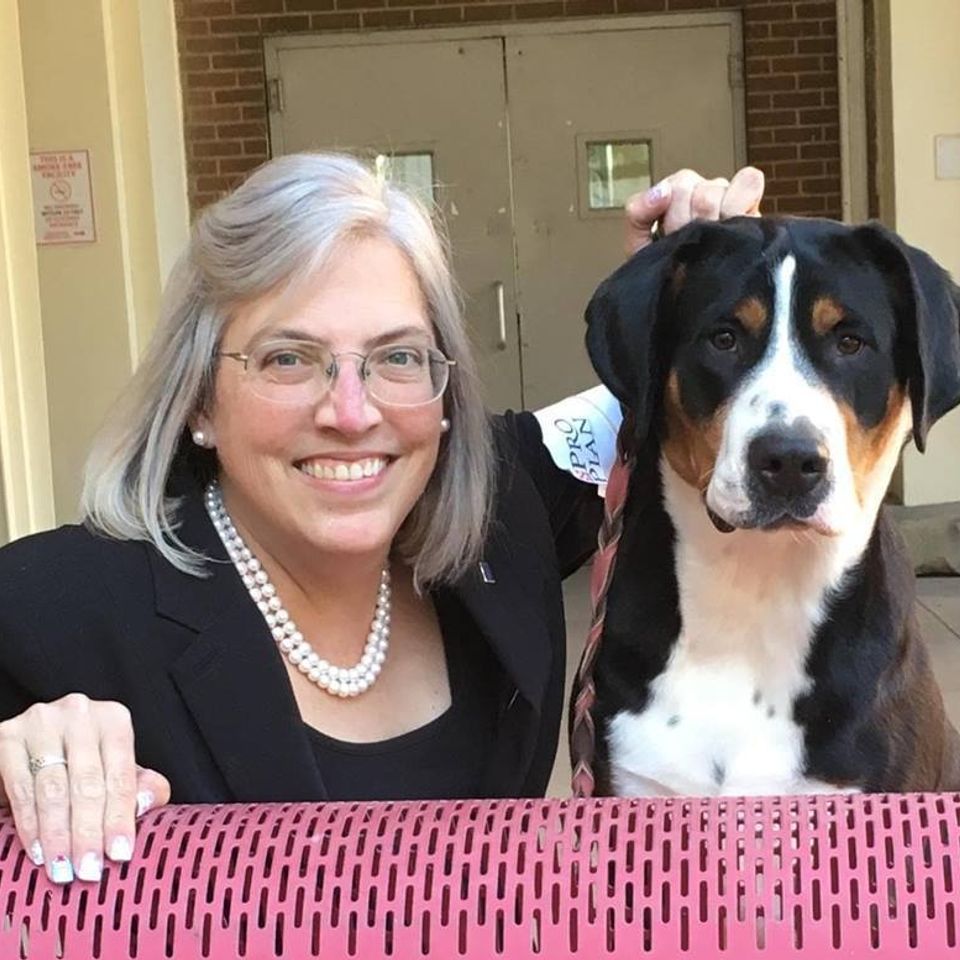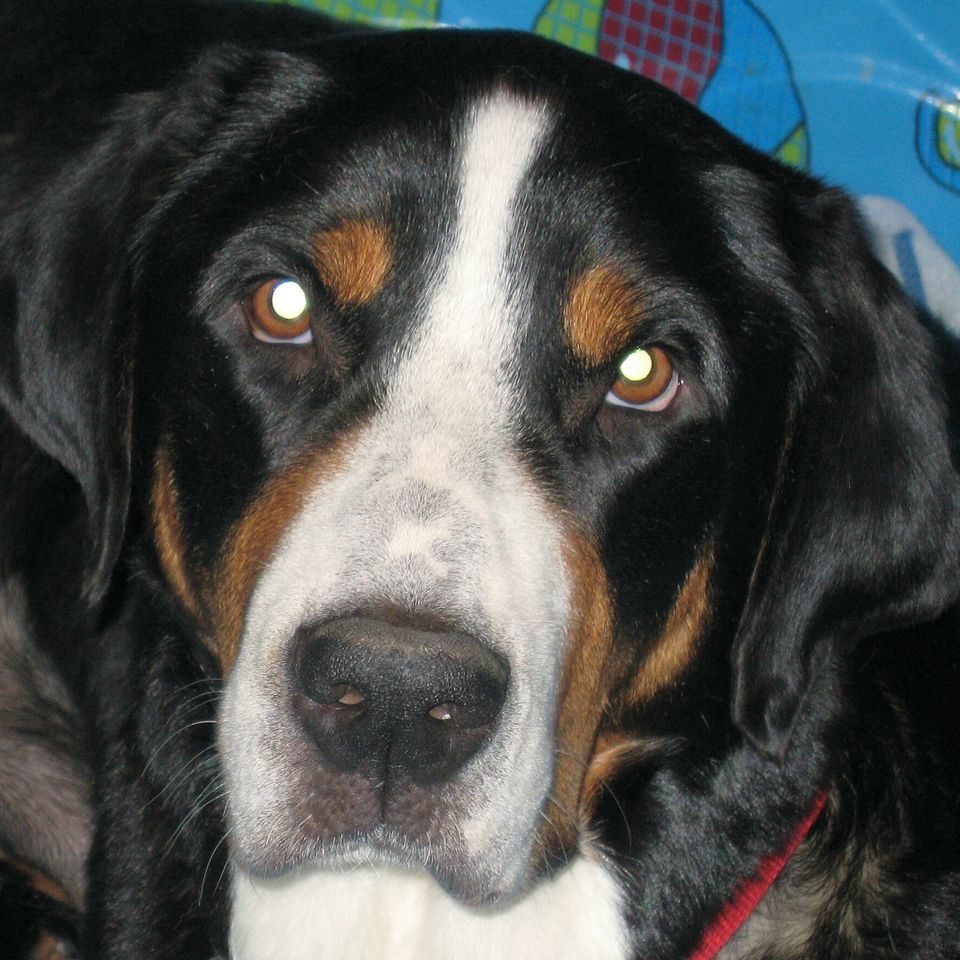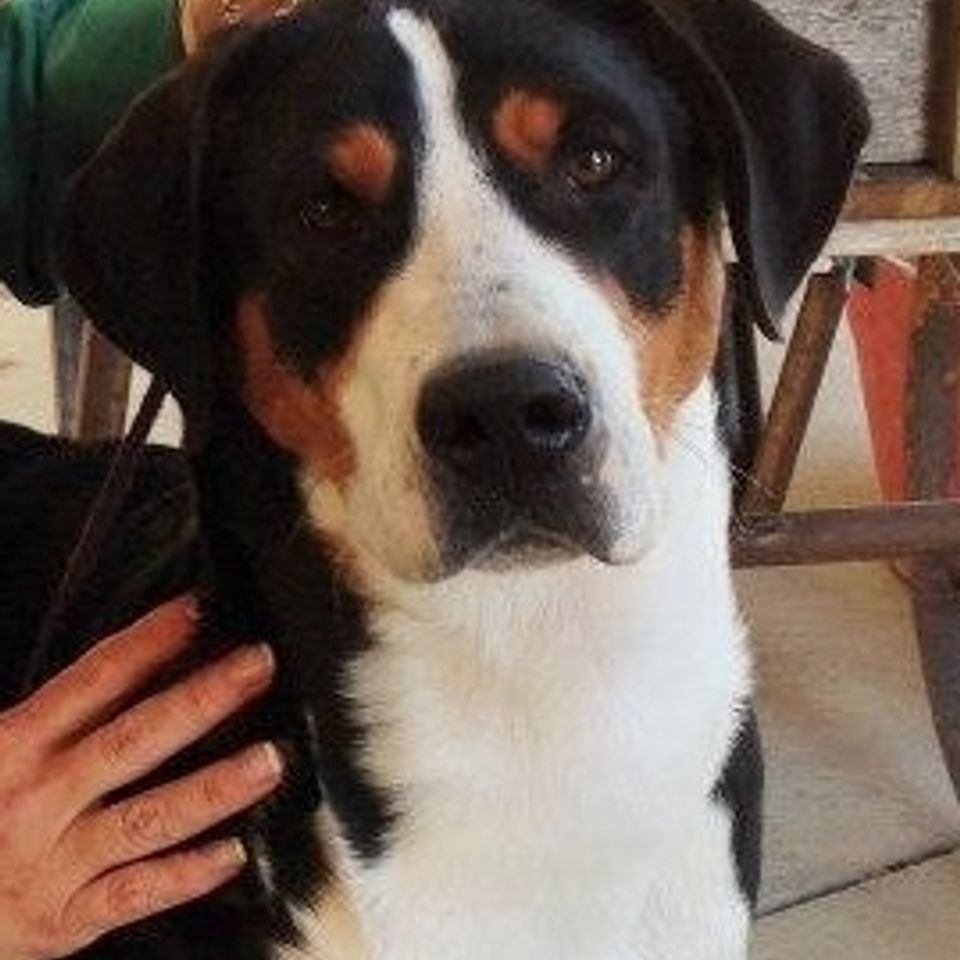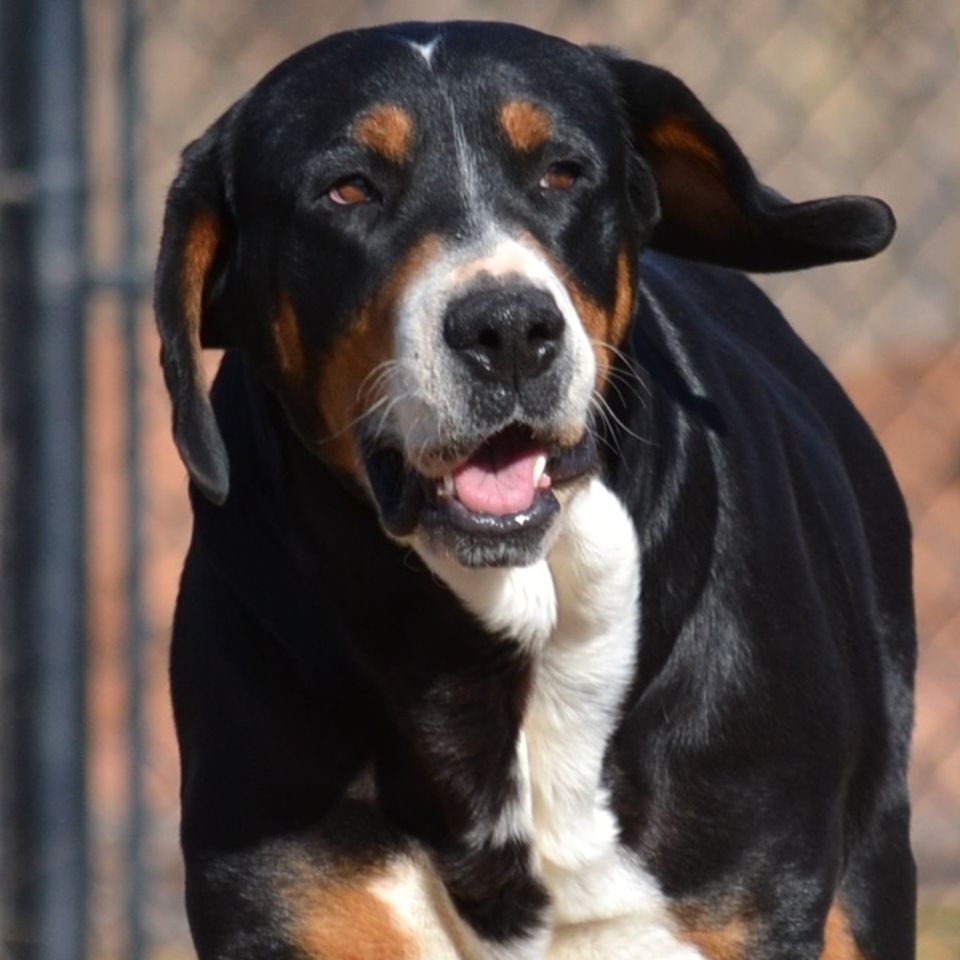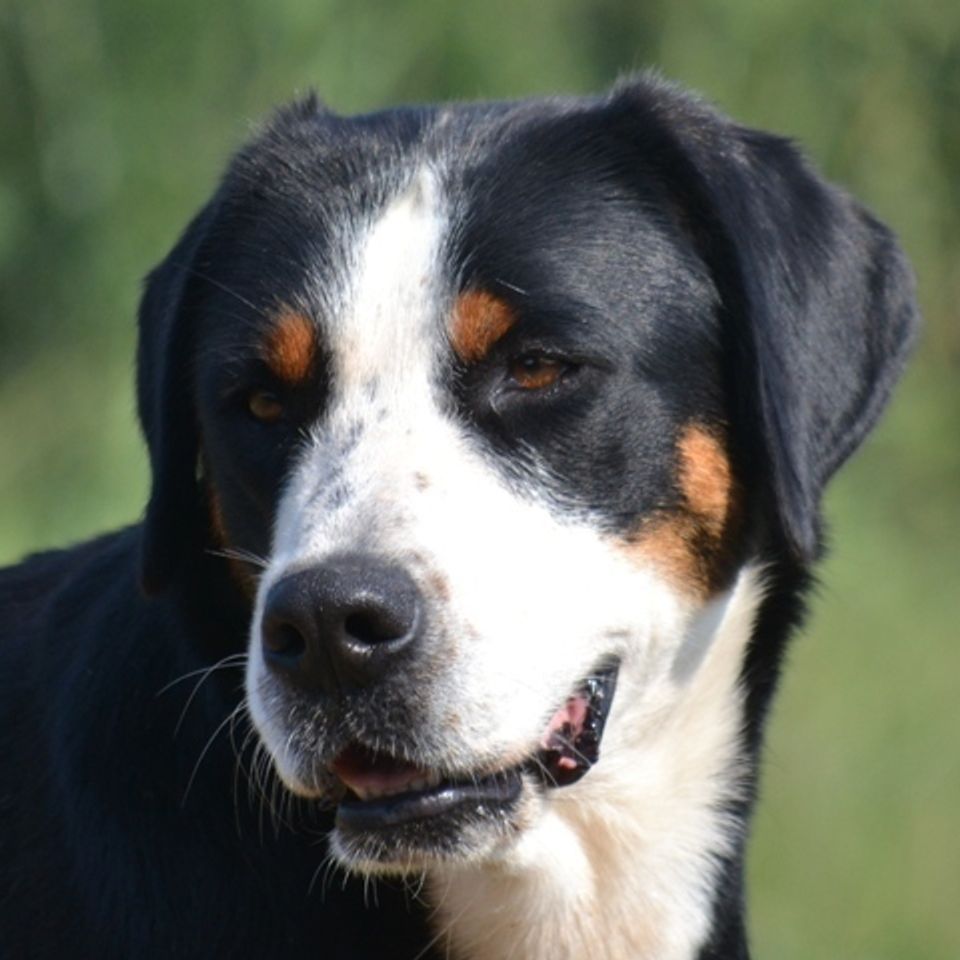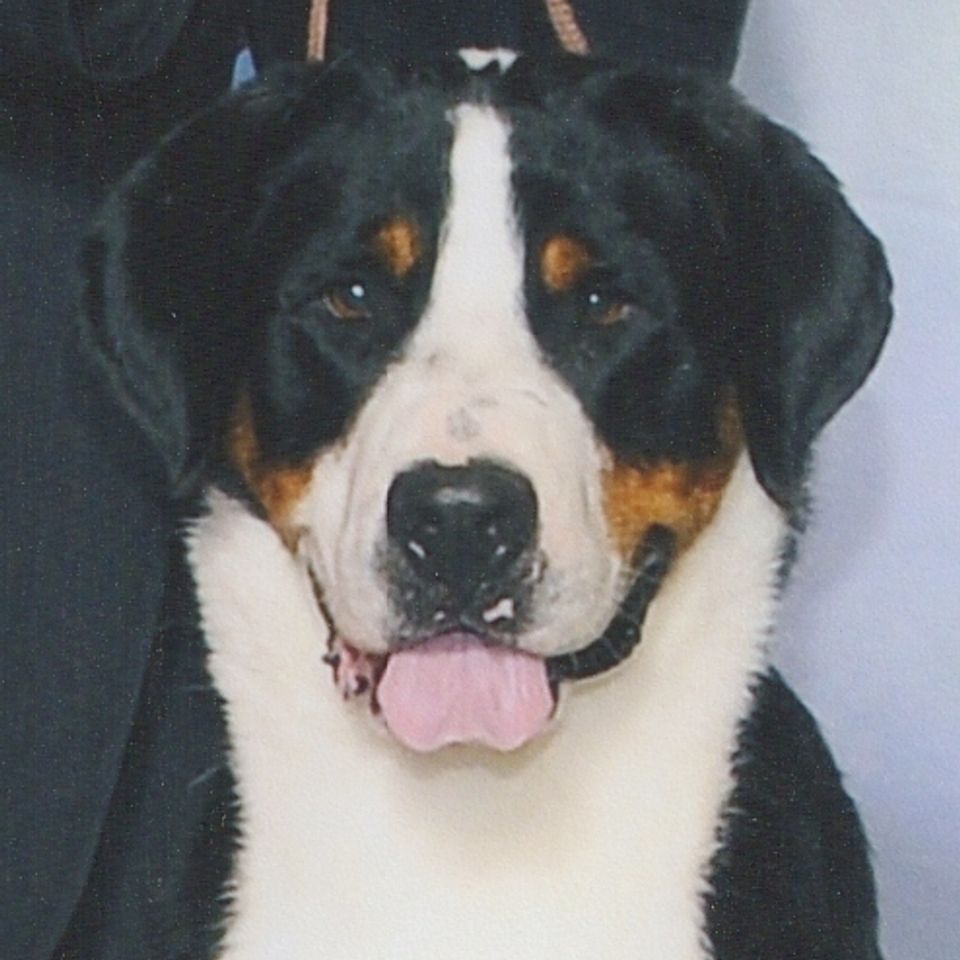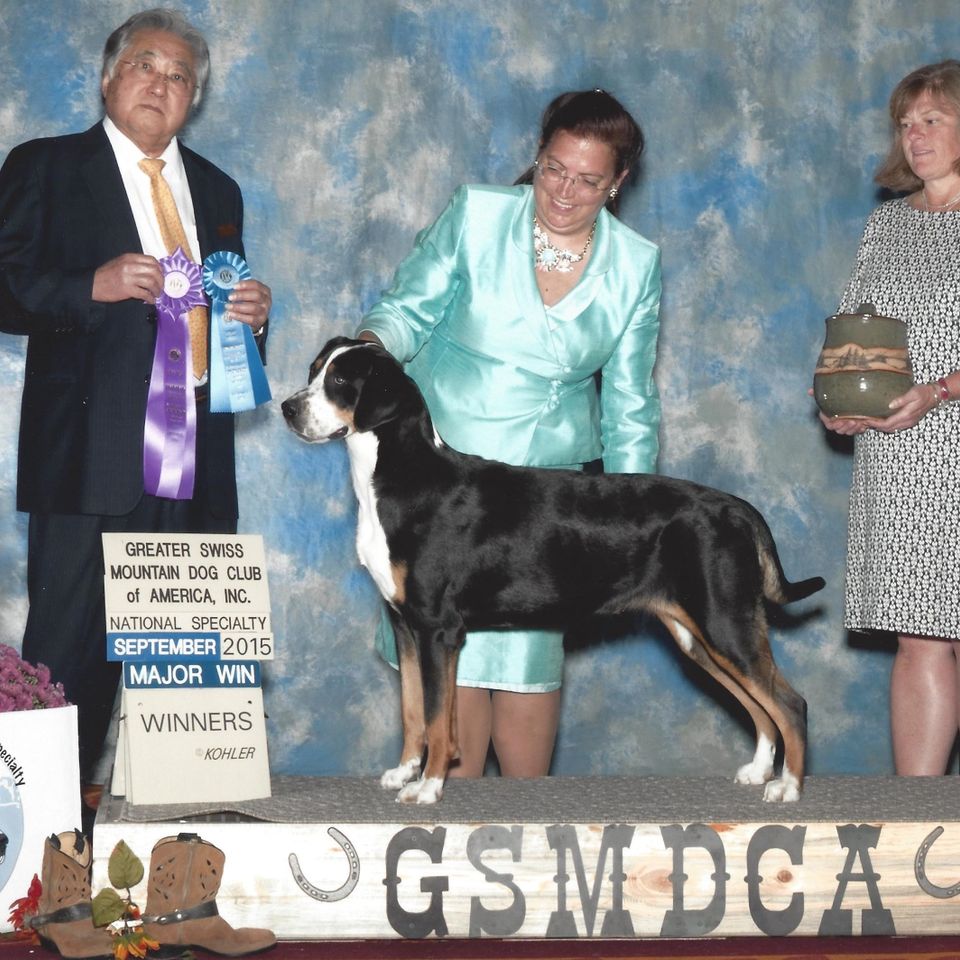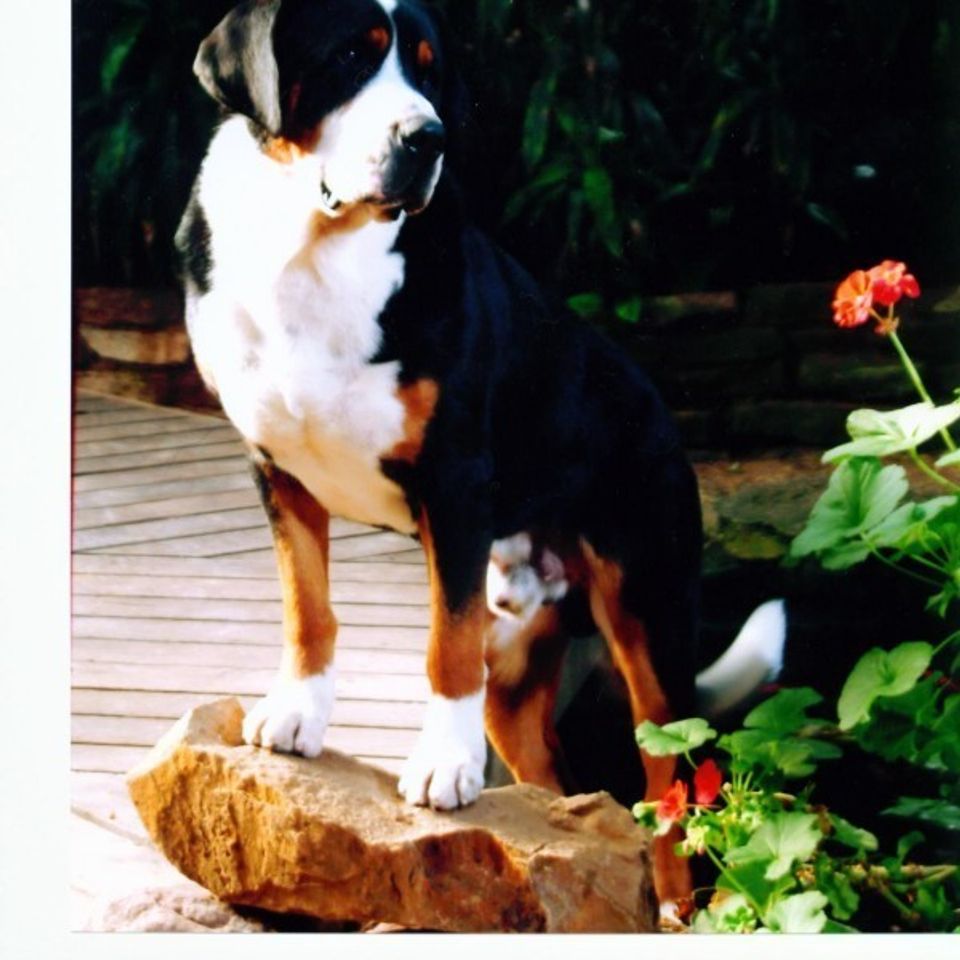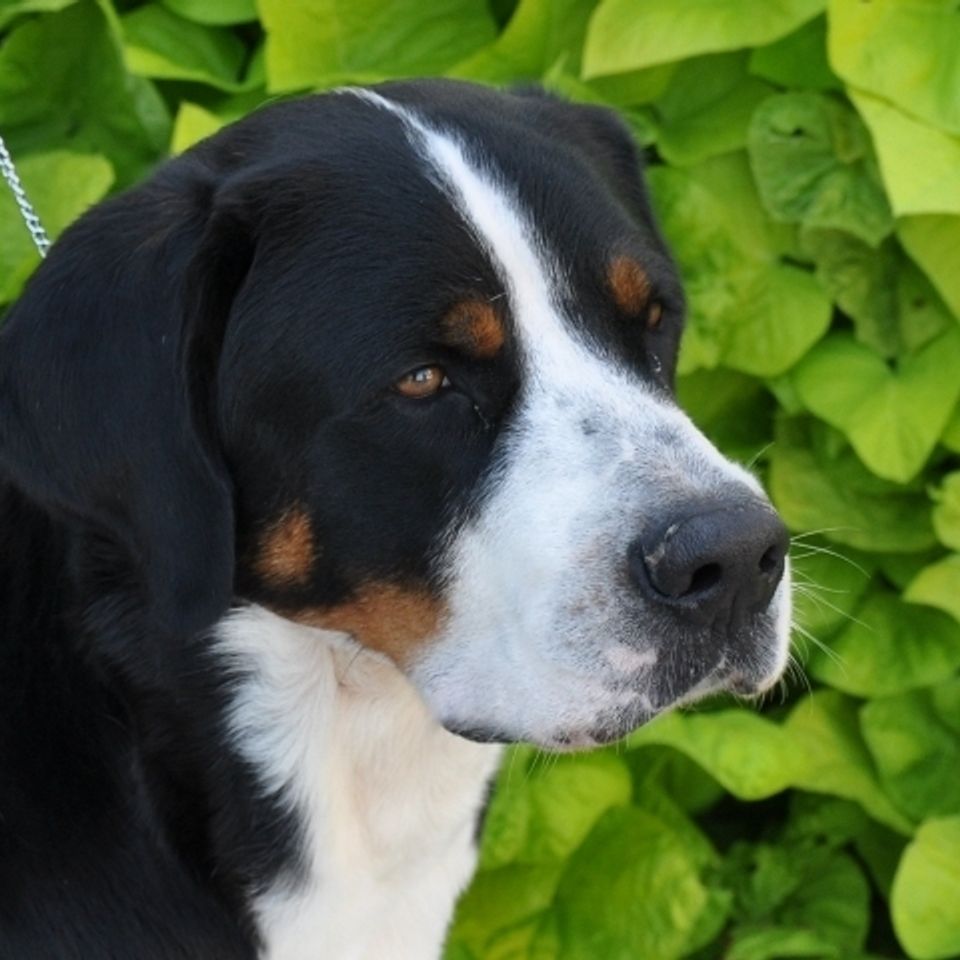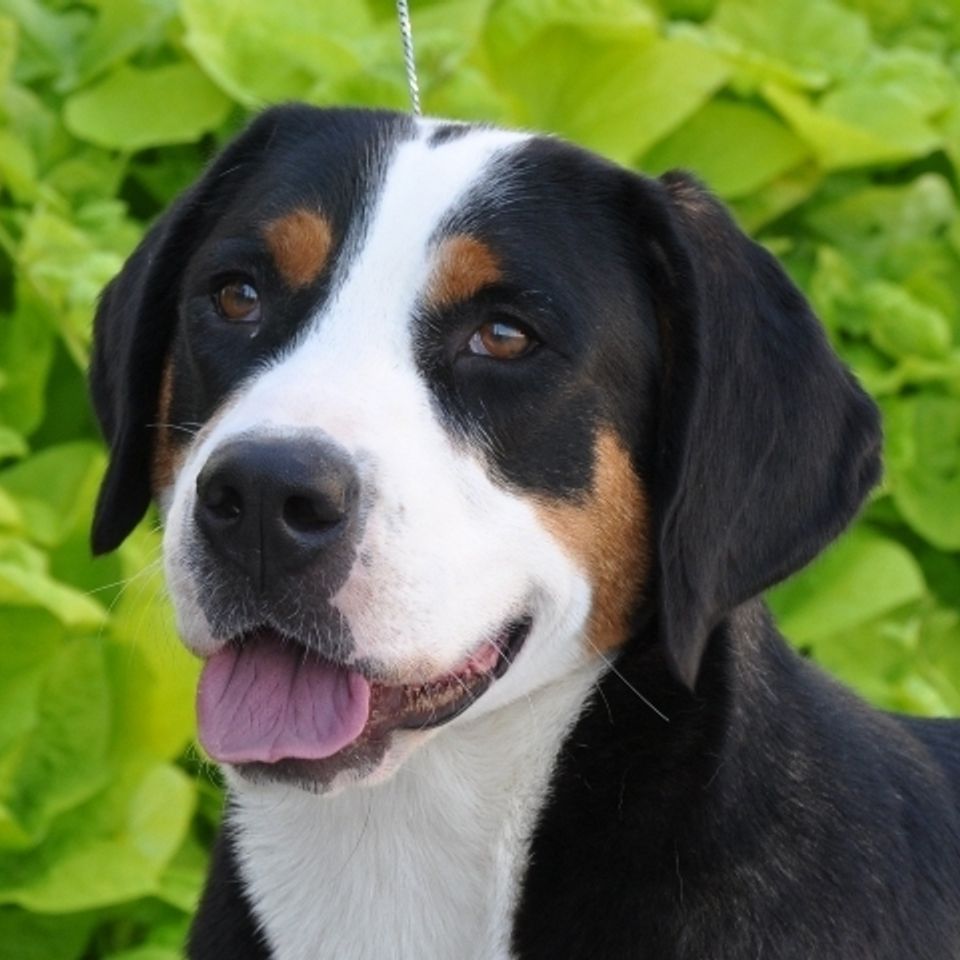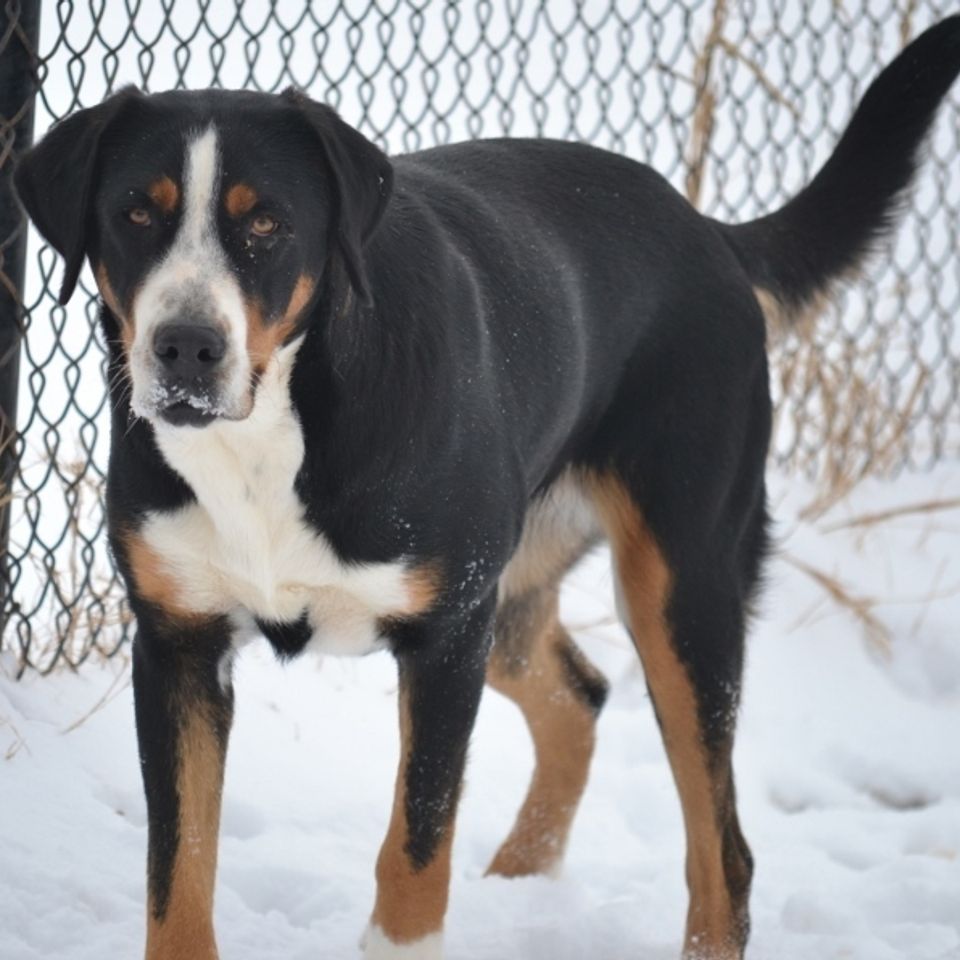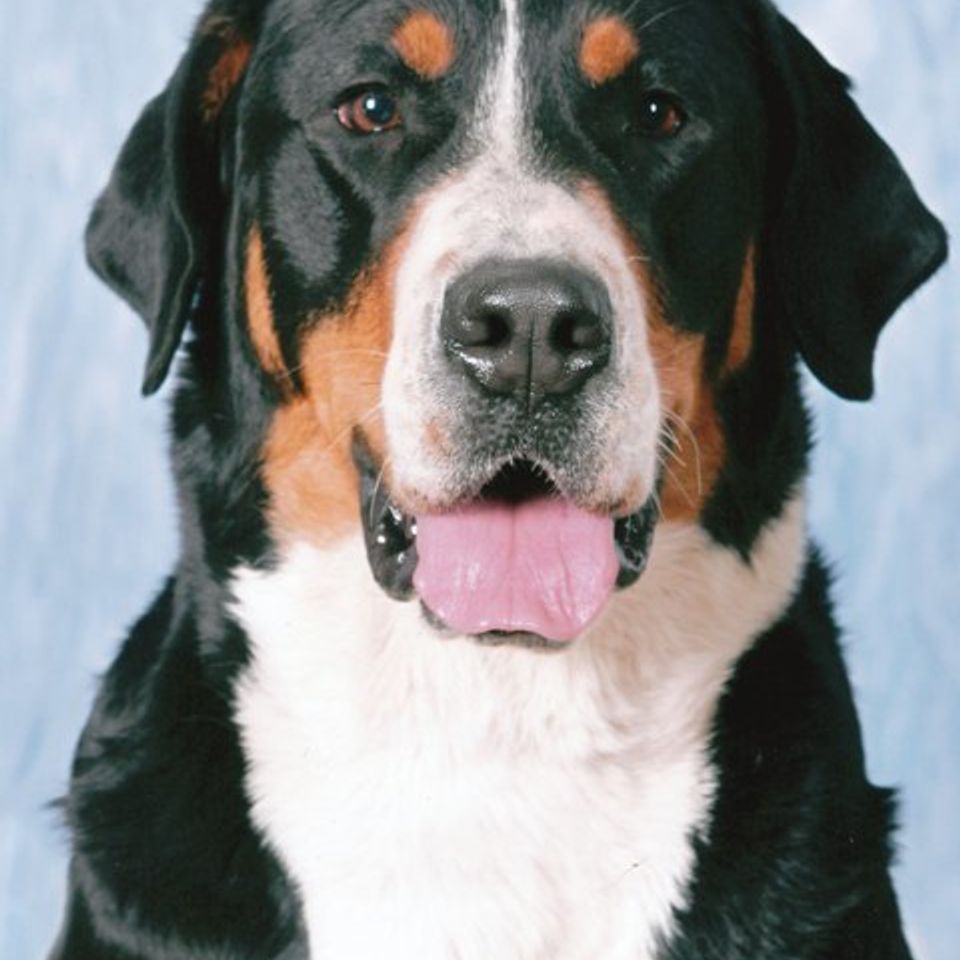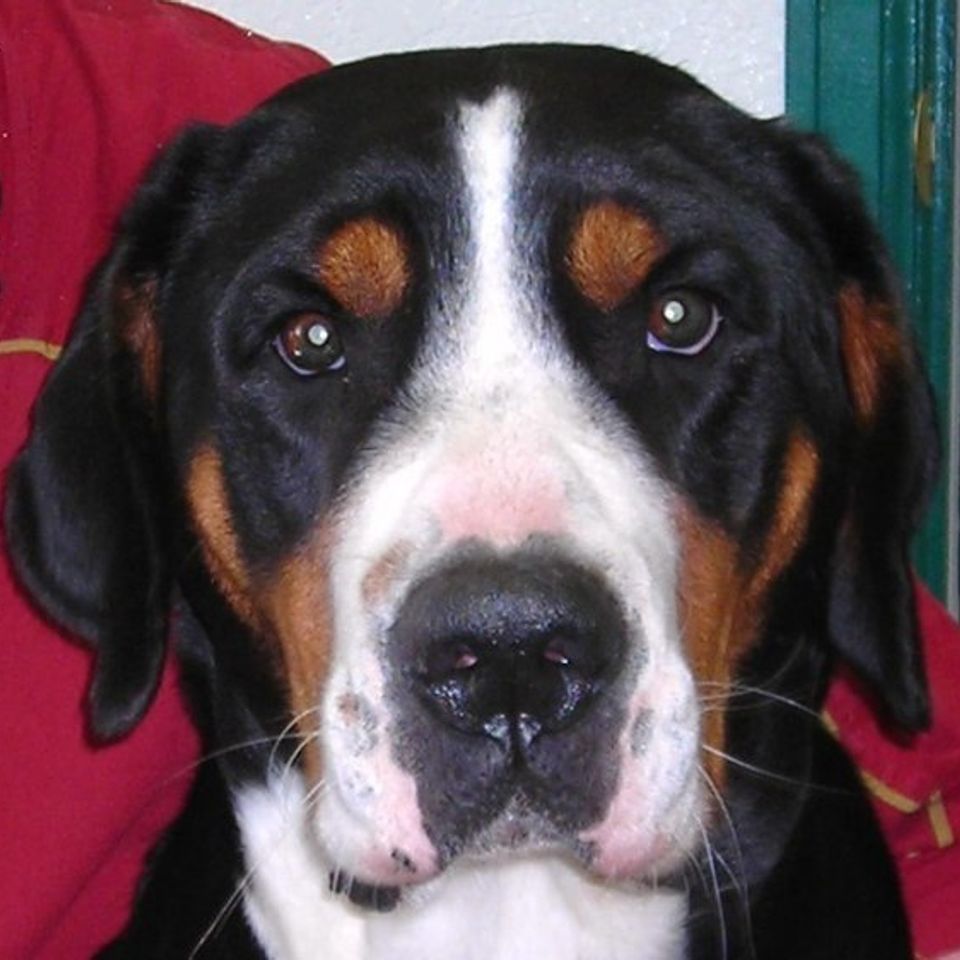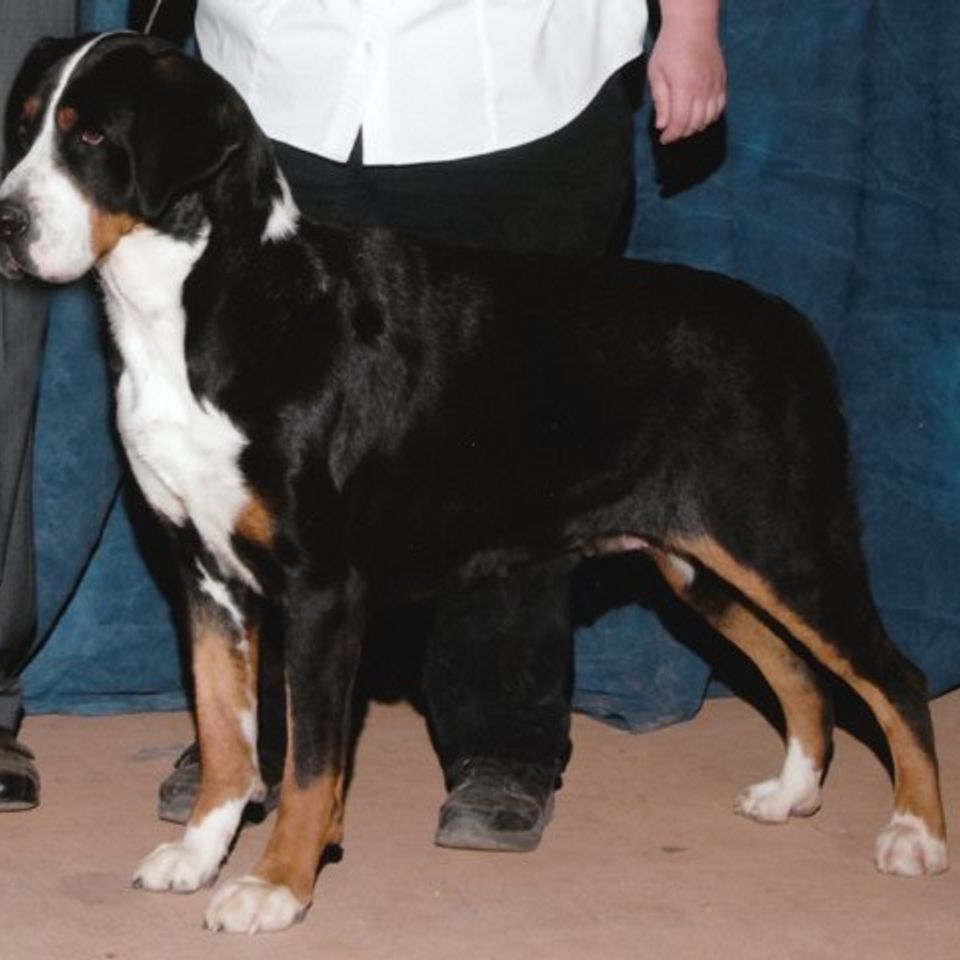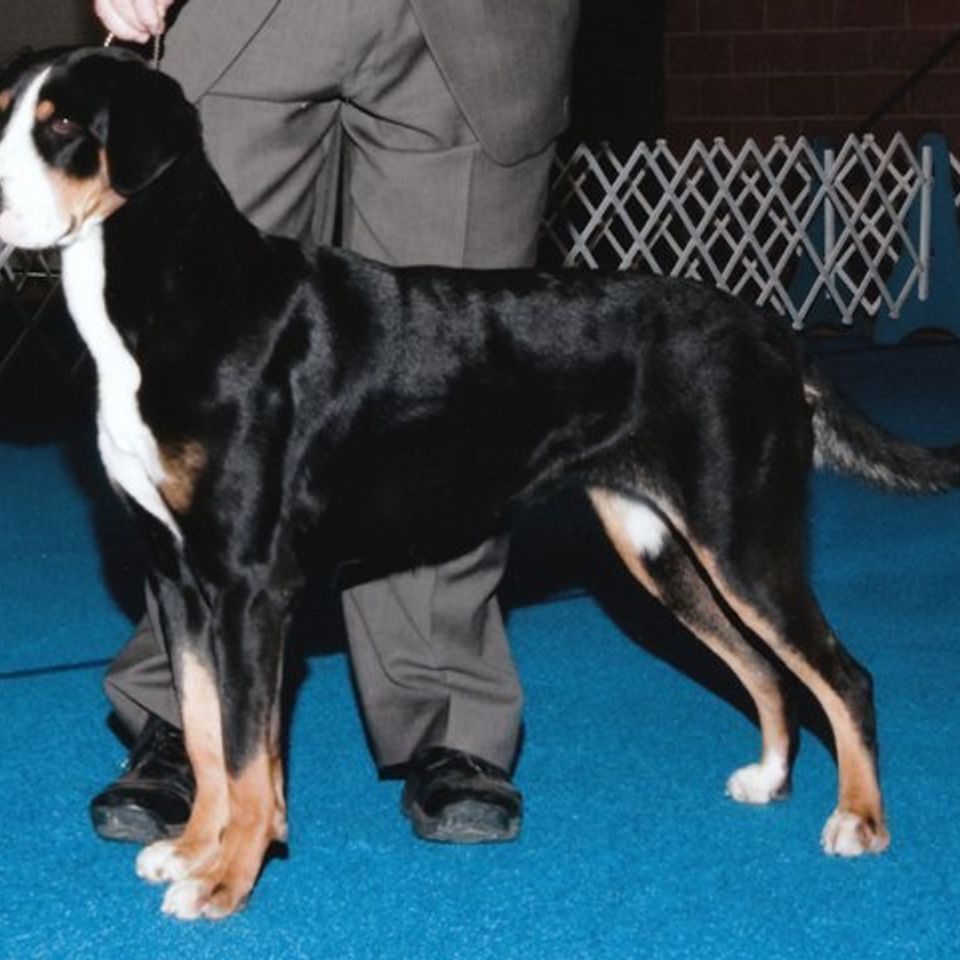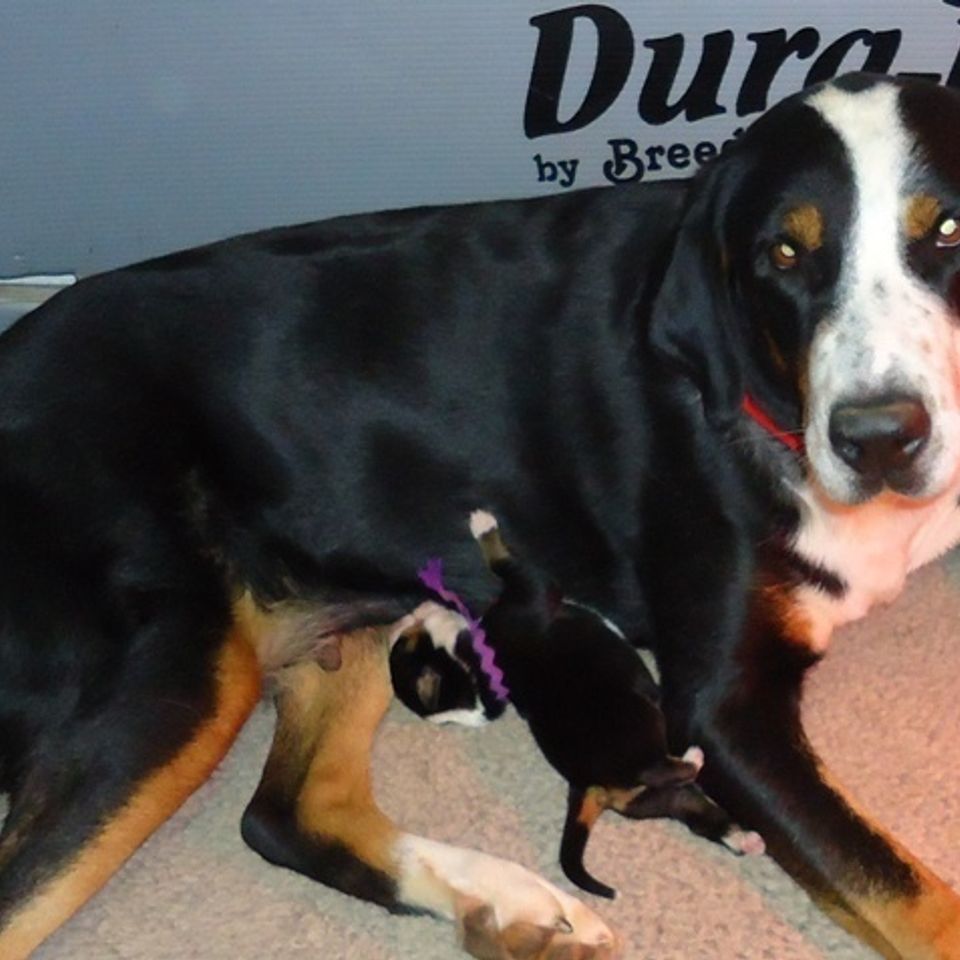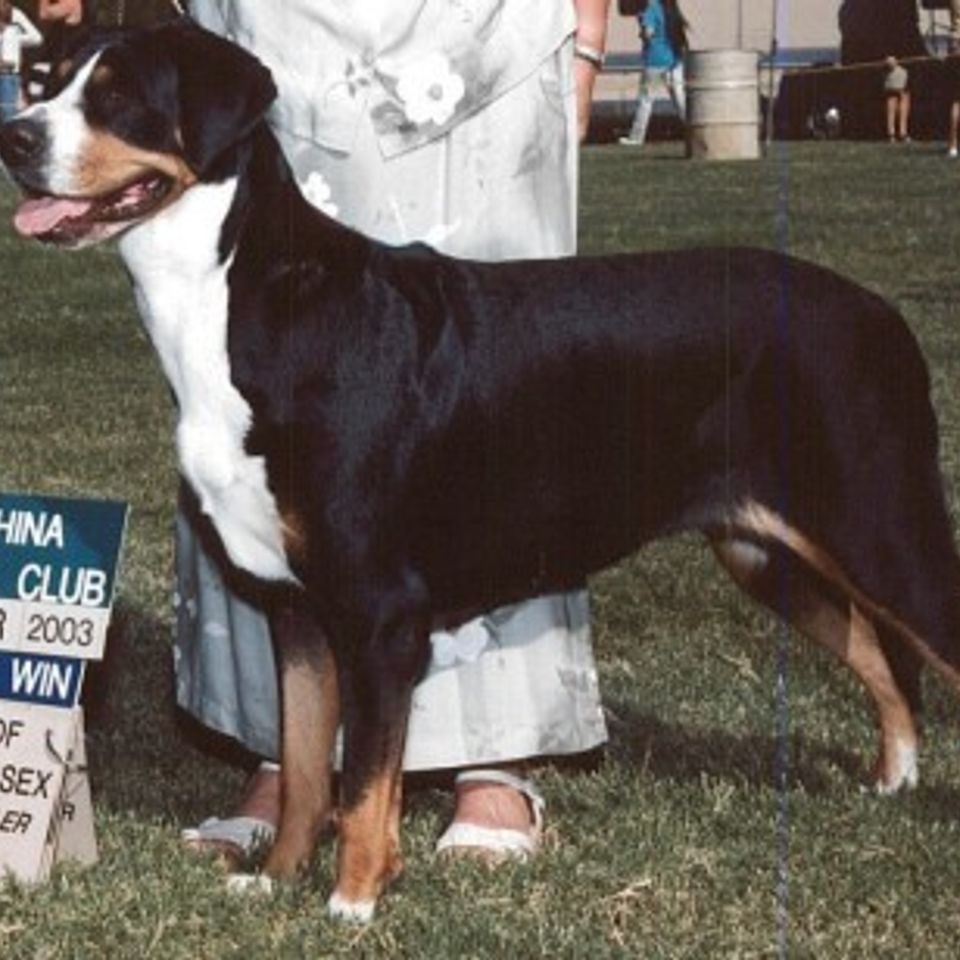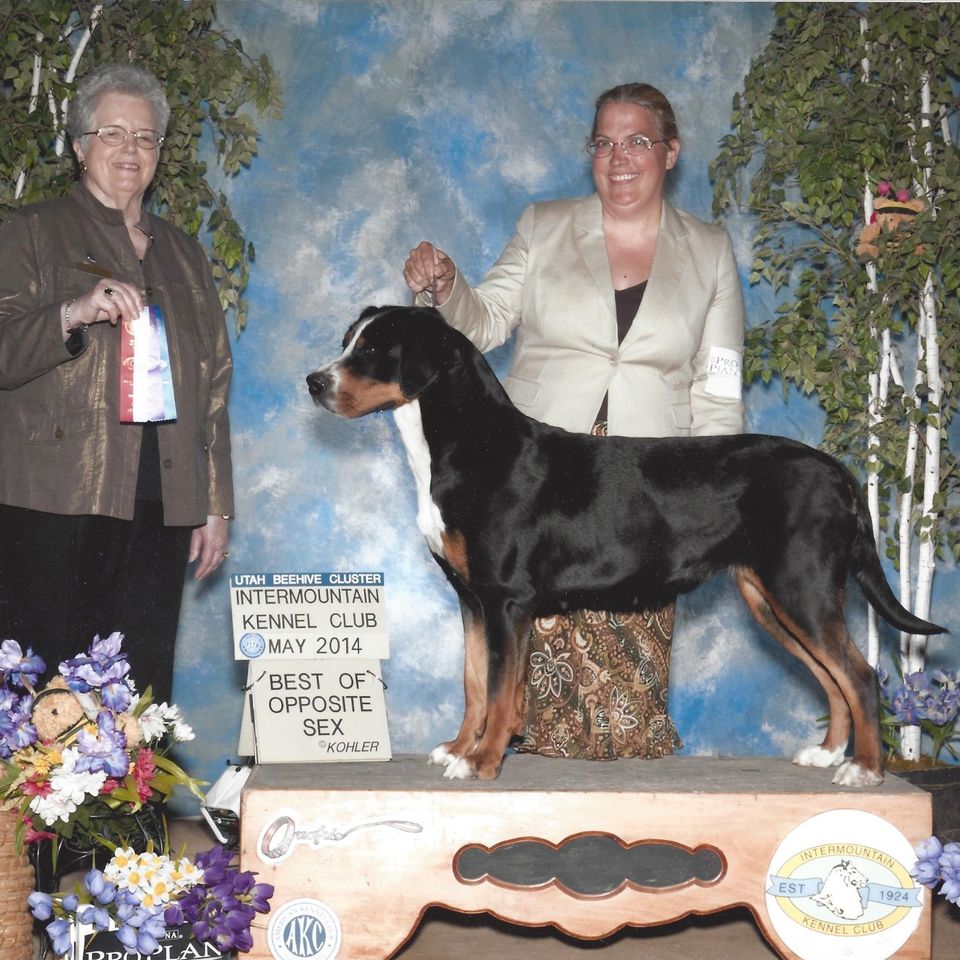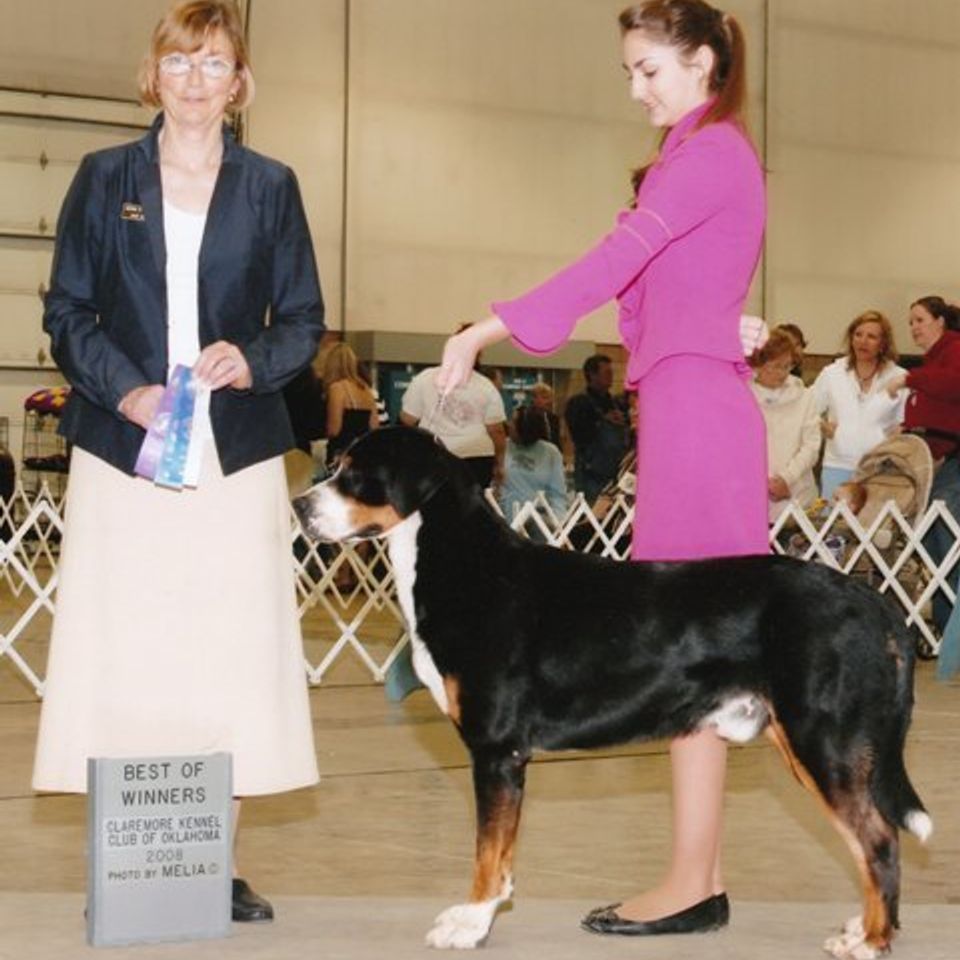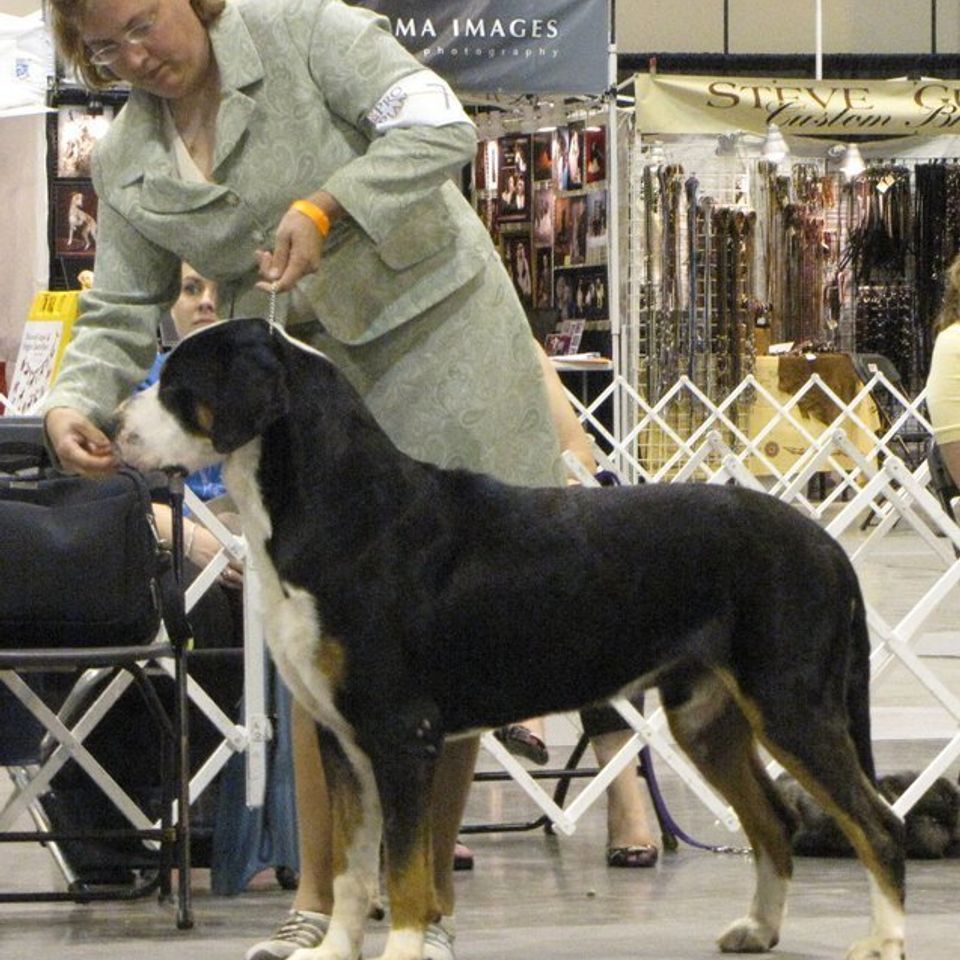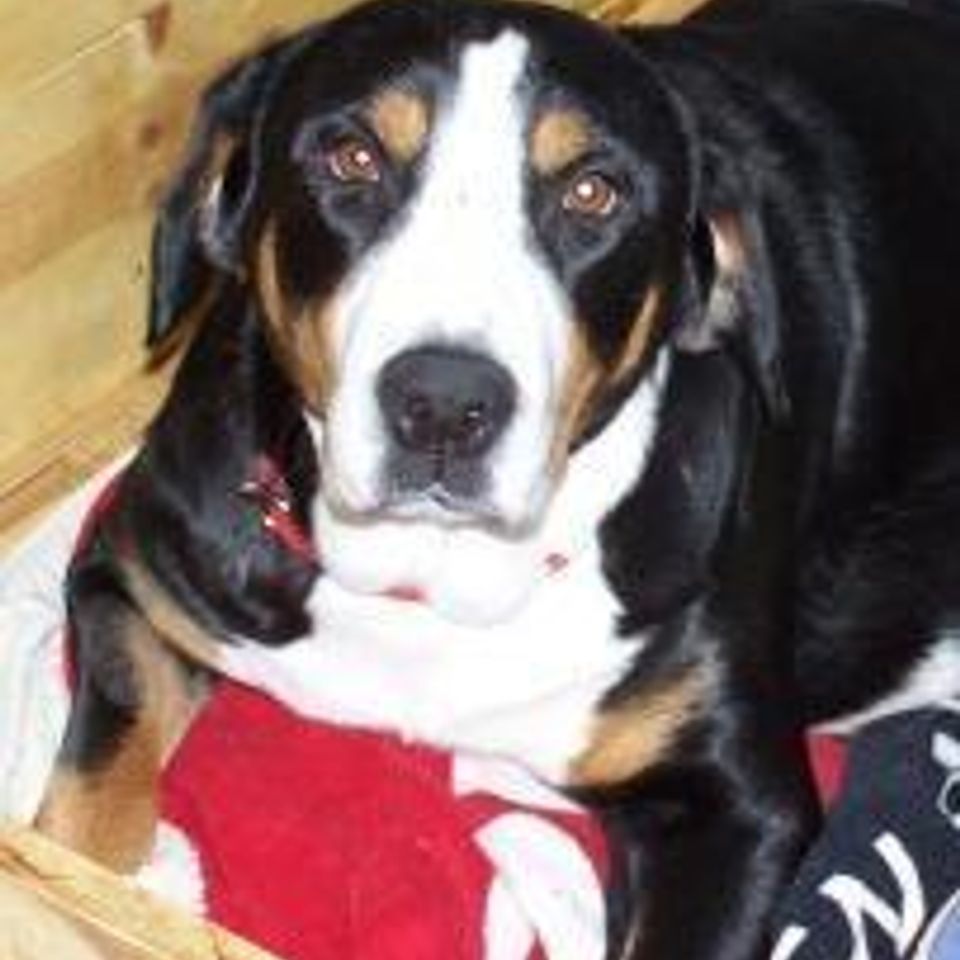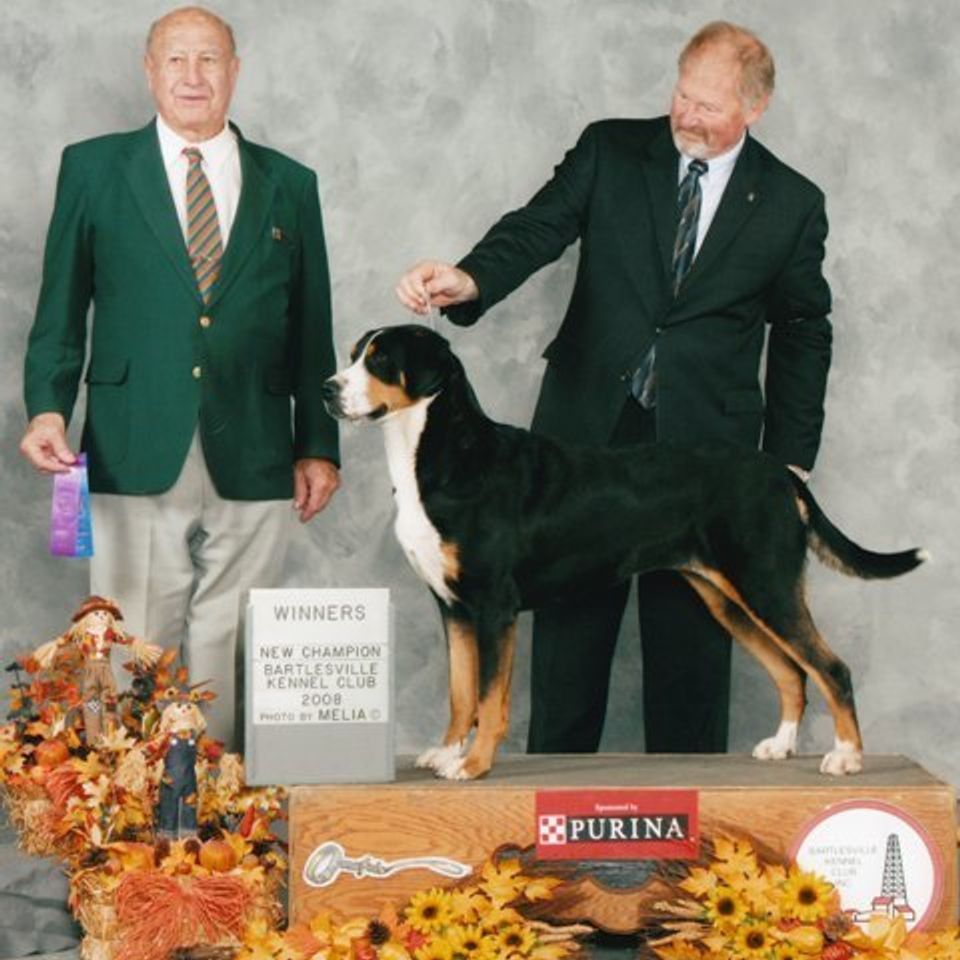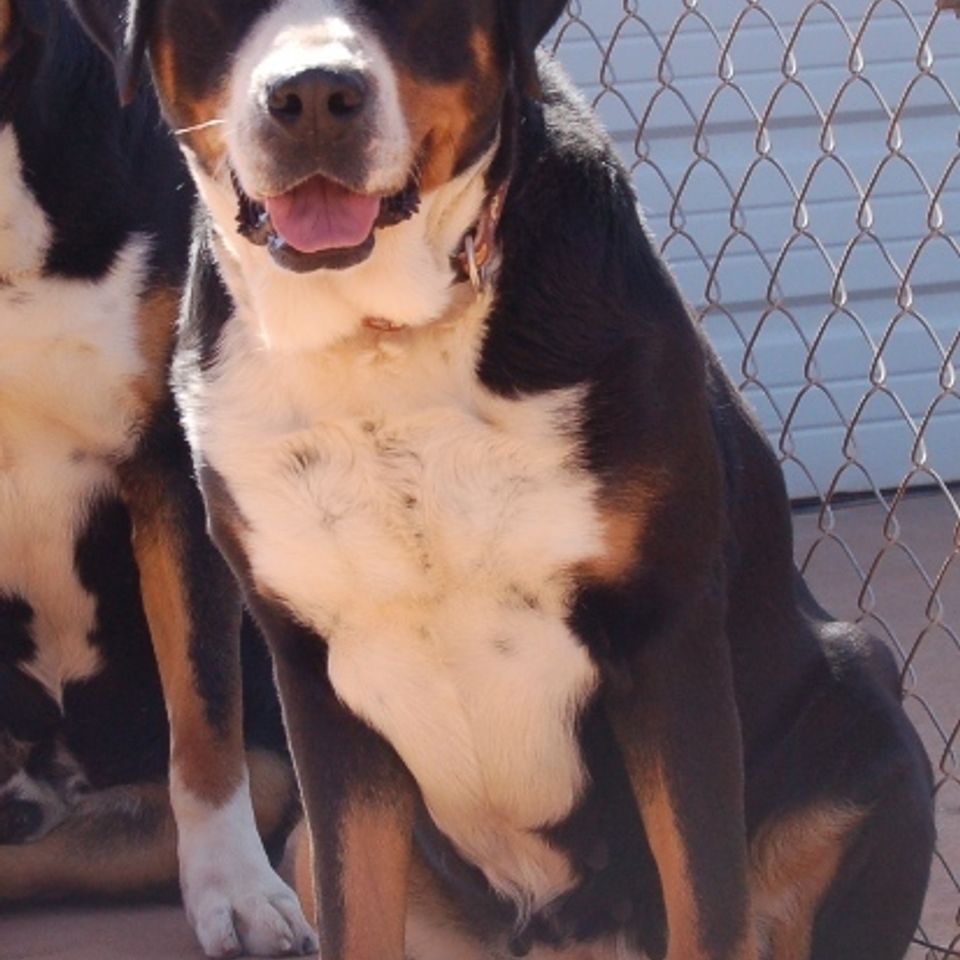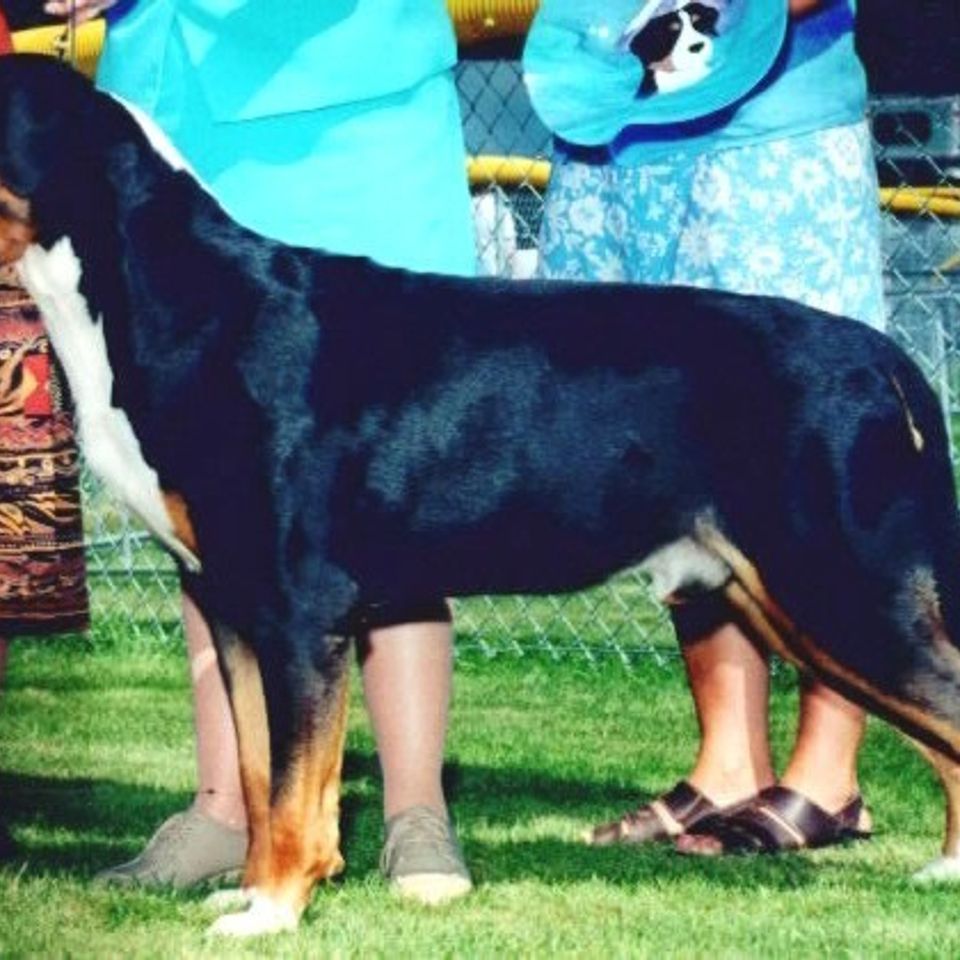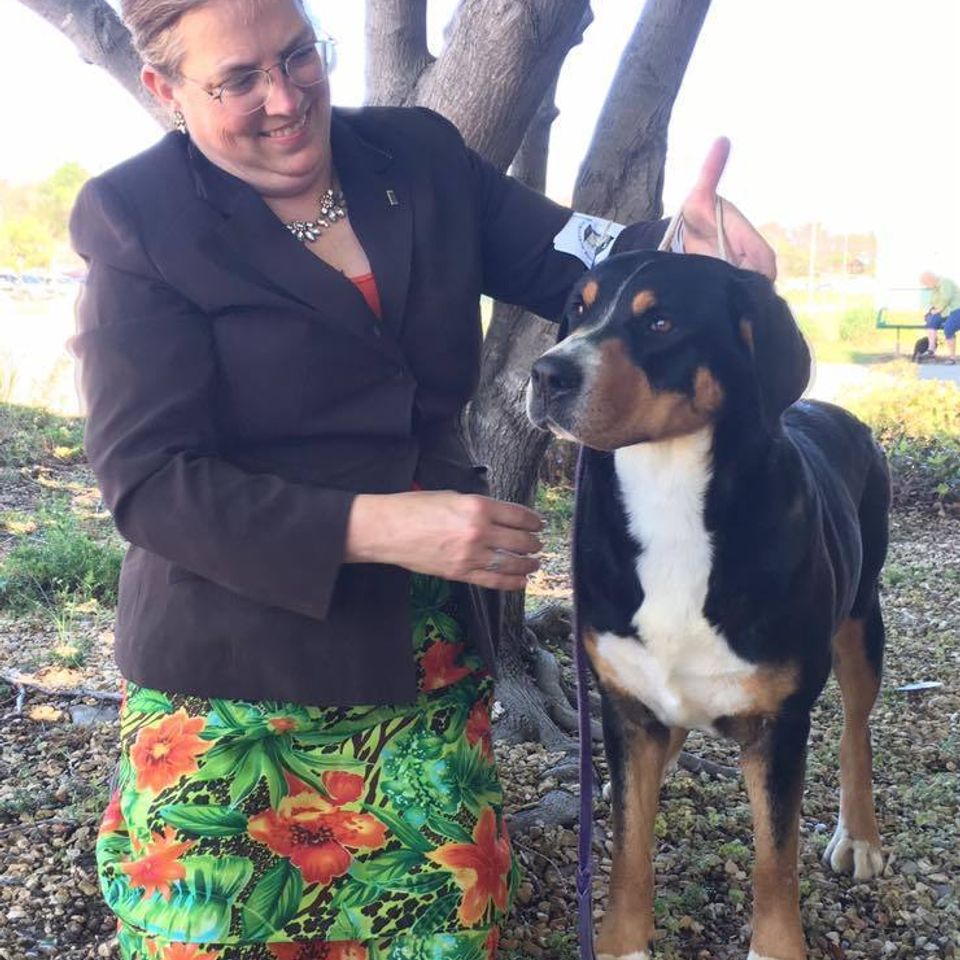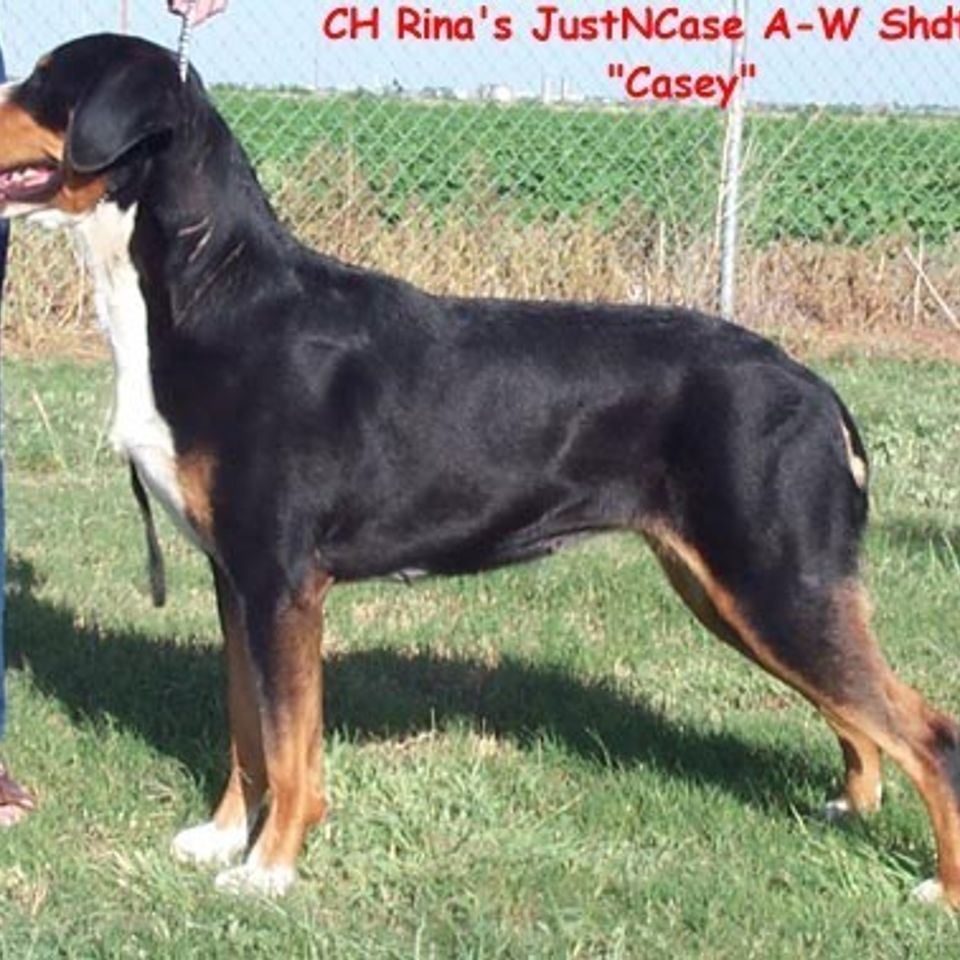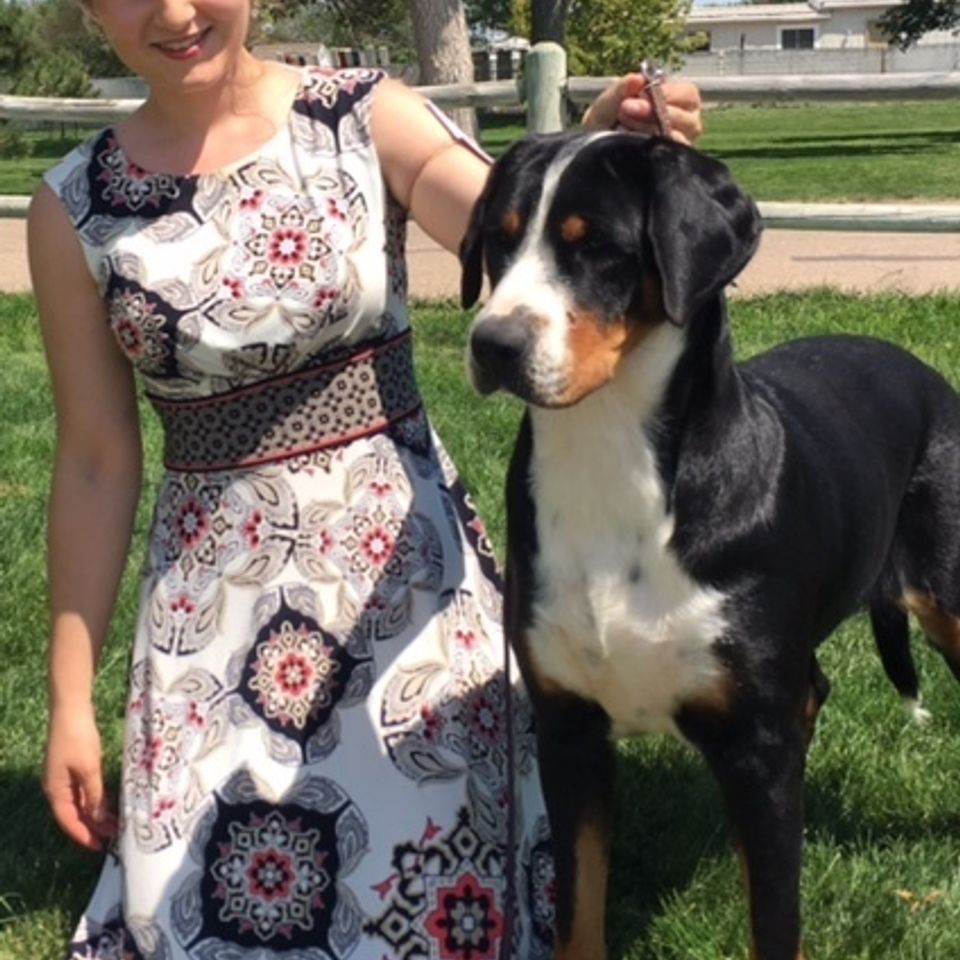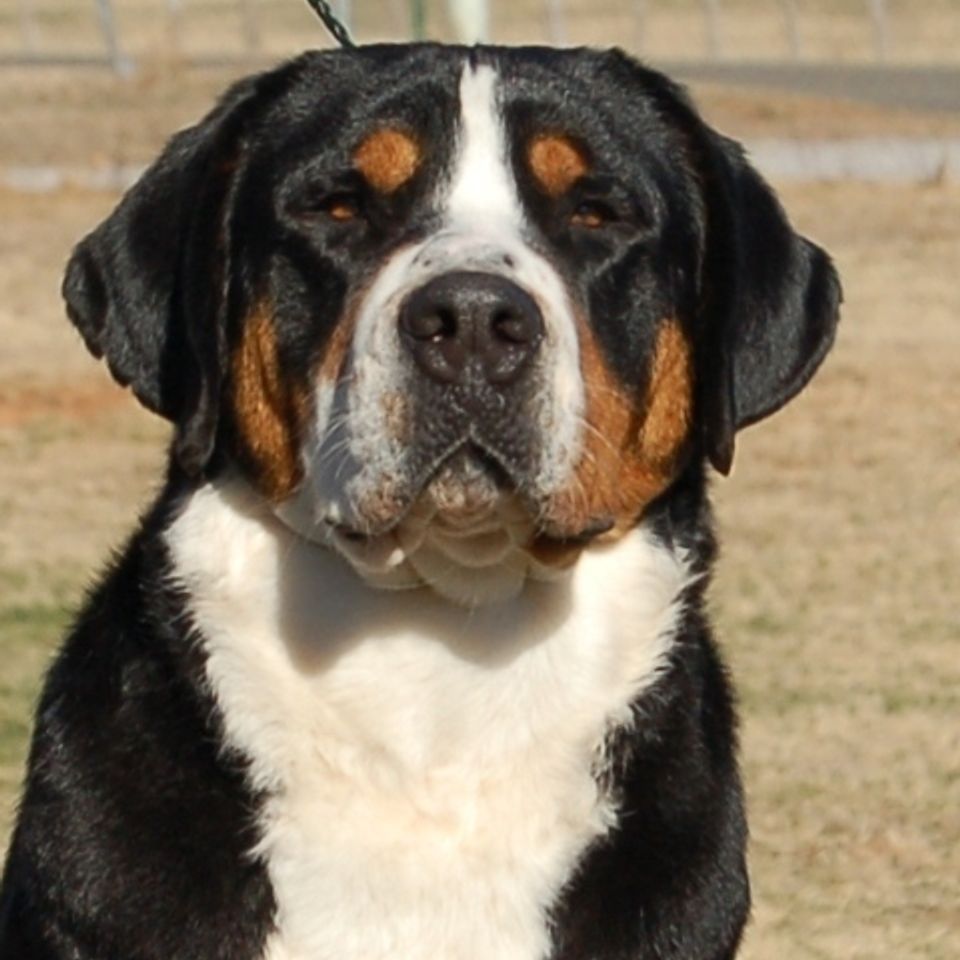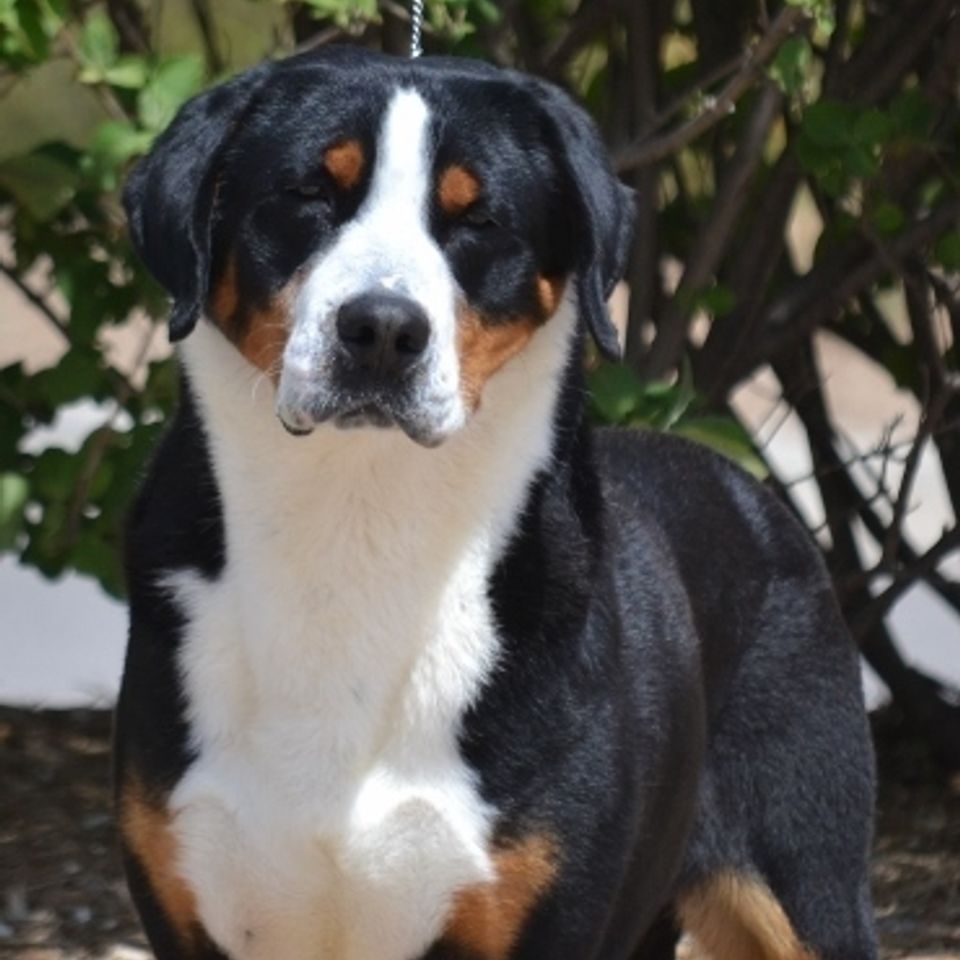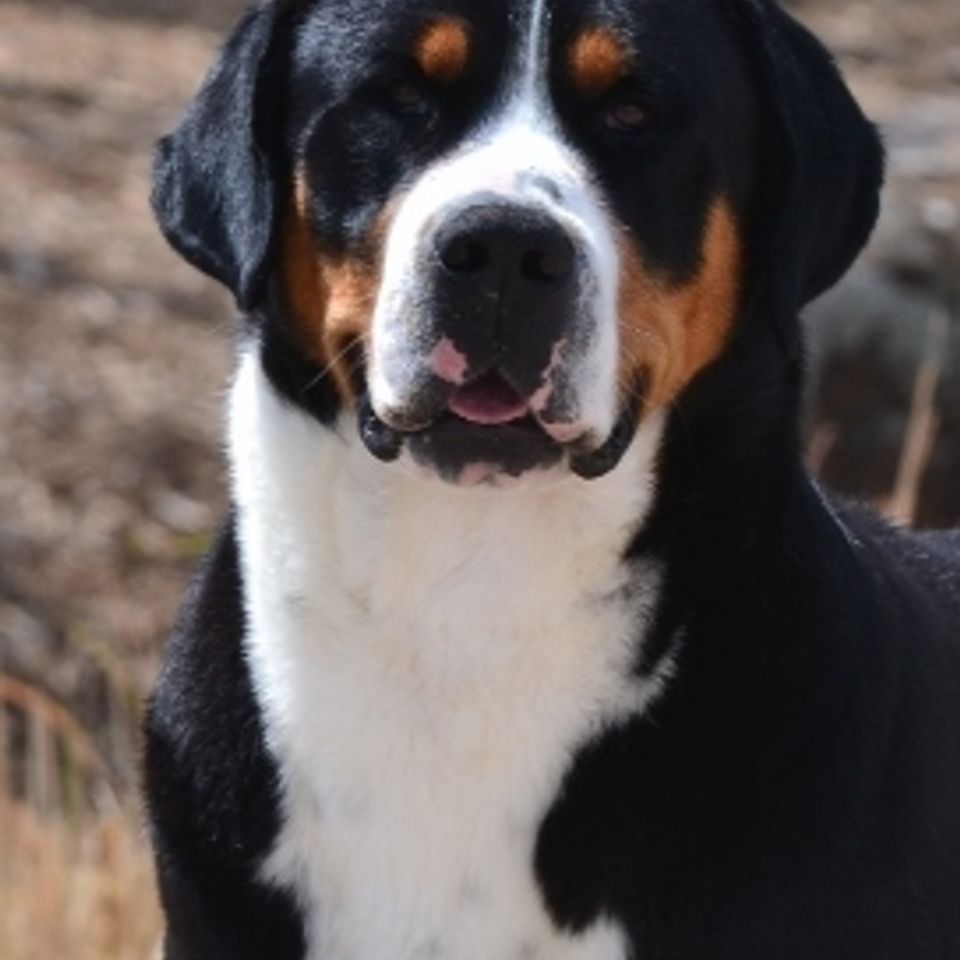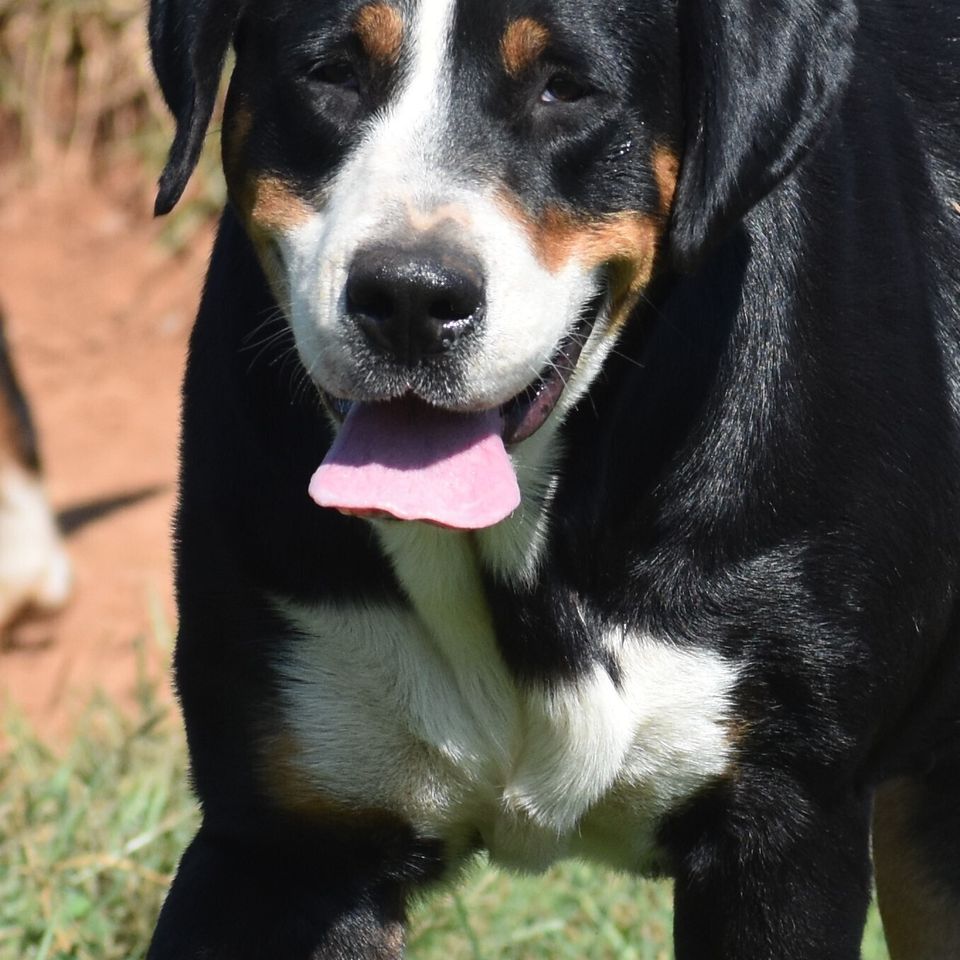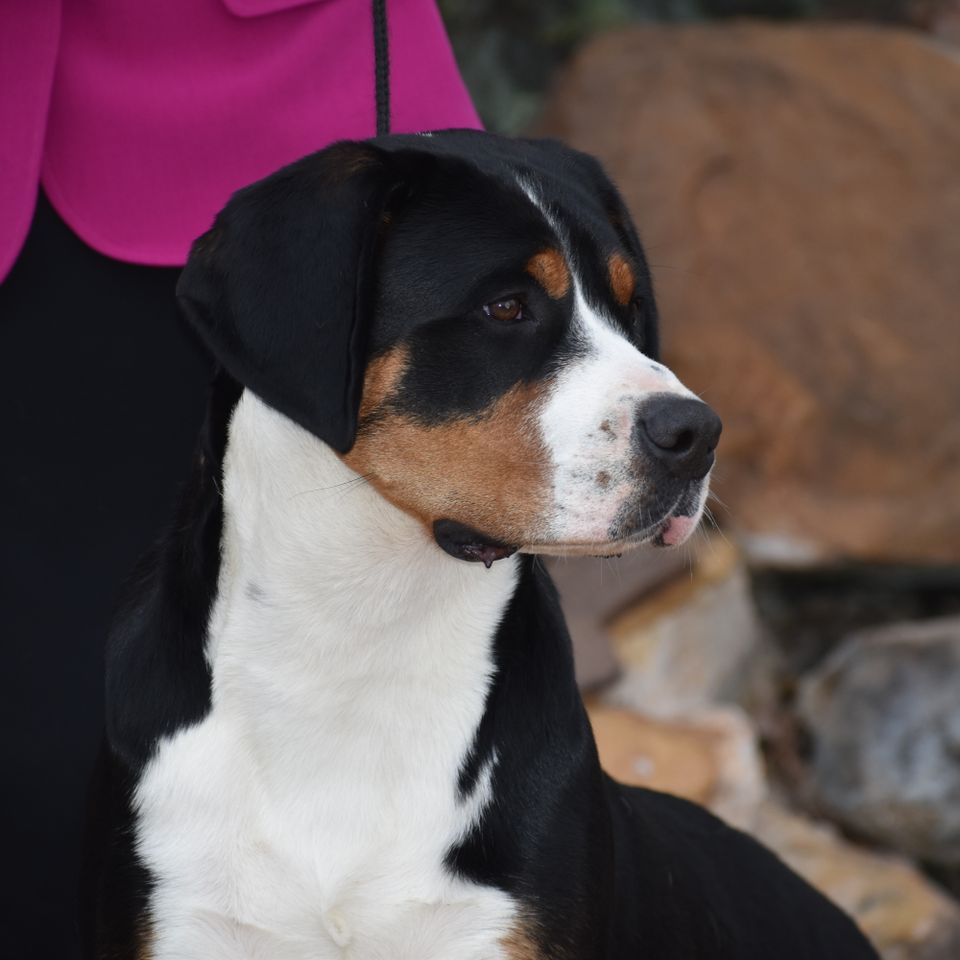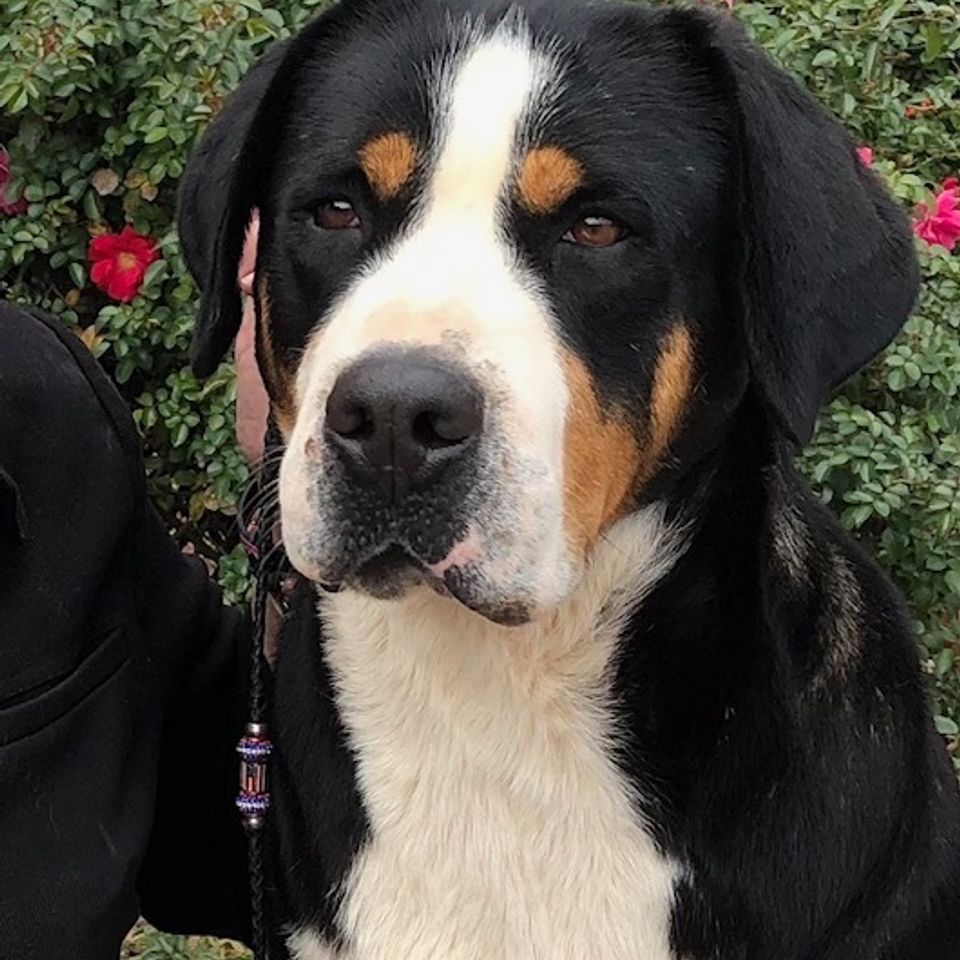Breed History
History Of The Greater Swiss Mountain Dog
From DIE SCHWEIZER HUNDERASSEN
Author, Hans Raber
1971 Chaper 6 (Revised)
(This is a translation into English from this Swiss dog book’s Chapter 6 which dealt with the Greater Swiss Mountain Dog.)
Origin:
We have no written information about the Grosse Schwiezer Sennenhunde prior to 1907. He simply did not exist as a breed. Even later, until 1913, written mention is only to be found in reports by exhibition judges. They were mostly written by Prof. Dr. A. Heim, who has the credit of giving "social status" to the Sennenhunde, i.e., to have them introduced into official dog breeding. Strebel in his standard work describes the Appenzeller and mentions the Entlebucher as a local variety. He seems to know nothing about the Grosse Schwiezer and the Berner. Heim and Dr. Kunzli are sure that the Grosse Schwiezer was the most widely kept dog in the mountain areas of Switzerland between 1860 and 1870. By the end of the century he is supposed to have disappeared.
I doubt that. If this dog was commonly kept around 1870, it is unbelievable that only 30 years later you could only find him in remote valleys in the Bern area. A well known and working dog cannot disappear in such a short time, especially not if he had all the good qualities he is credited with. Furthermore, this dog was not limited to Switzerland. He also was known in southern Germany, where today the Rottweiler is his noble successor, and in other areas.
Of course, there was not systematic breeding there, nor elsewhere. It is hard to imagine that the farmer would take his bitch in season to a specially selected male. This was left to chance. From the litter--GSSH have up to 18 puppies--those who were likeable and looked suitable were chosen. If a dog later proved to be unsuitable he was butchered and eaten without misgivings. Because of the strict selection and the fact that the puppies were normally kept in the neighbor-hood, there was a fair stability in resemblance and character. The practical use dictated the appearance. The dog had to have an impressive size, he had to stand bad weather gladly, be of steady temperament, and not eat too much. Because the ideal cow had to look husky, the farmer’s ideal of beauty was bigness. Thus the big, massive looking, heavy dog was preferred to the slim looking dog.
We don’t know how much attention was given to colors. We suppose that the evenly marked dog or the tri-colored dog was preferred over the irregularly marked dog.
Heim says that the big butcher dogs ("Metzgerhund") disappeared when foreign dogs were imported. I ask myself what farmer of the Bernese area, Emmenthal, Schwartzenburg, or Oberland would get a foreign dog, especially if it cost money! Something must be wrong here. The dog could not have disappeared by 1900. What kind of dog then did the farmer use in 1900? Heim does not give us an answer. He only mentions mongrels. But what else were the Sennenhunde about 1860 but mongrels? It requires a planned breeding program to produce a large number of tri-color symmetrically marked dogs. By 1900 the tri-colored dogs were rare. The were possible more common earlier, and in the second half of the century the red-white variety was preferred because of the then fashionable St. Bernard and his unmistakable markings. Thus, many a red-white farm dog was "promoted" to St. Bernard. (I am reminded of the saying, We have more of this (stuff, food, etc.) than red dogs.")
This development was--unconsciously perhaps--promoted by the start of scientific breeding. Dr. Kunzli sometimes had more than seventy St. Bernard's boarding with farmers in the Toggenburg area. No wonder that the red-white type became more prevalent than the tri-color, especially since the black color did not dominate in inheritance.
Heim saw many GSSH that looked typical in appearance, but were black and tan, black and white, totally brown, red or yellow and brown with yellow and white markings. He said: "in all breeds of Swiss Sennenhunde litters occur with yellow puppies without black among the normal colored puppies. One finds this especially in the Grossen." We are sure that around 1900 there was still a variety of colors, especially light colorings with irregular white markings (St. Bernard's). Maurer (cited in Scheitlin) states that in the Langental area they had many black dogs with white markings, used for pulling.
It is not clear why Heim did not see the connection between St. Bernard's and Sennenhunde. It is possible that he did not with to see it. He was convinced that Sennenhunde were separate breeds. Obviously he was too much impressed by coloring and marking. The asymmetrical markings of the St. Bernard occur only in a late stage of dissolution of the coat color. The symmetrical head markings persist through generations; the black trim does not exclude a close relationship.
Thus, I think that the dogs were present in 1900 as cart-dogs for peddlers and people going to market, watch dogs for farmers, and drover’s dog for butchers, but they were rarely tri-colored. Depending on what their owners wanted, the dogs were interpreted as either this or that breed. Dr. Straumann called them Bernards, Heim named them Sennenhunde, and both were correct. Because red is recessive to black, it was easy to breed a red coat or red markings of the St. Bernard as a part of the standard. If there was red, it was always purebred, and because black dominates over yellow and brown, it was easy to breed quickly a large number of tri-colored litters by one single tri-colored stud dog with red bitches. However, those animals were not pure as concerns the inheritance of their coloring. These experiments showed quick results even with great genetic knowledge.
The merits of Heim, Schertenleib and others are not lessened: those men were needed to establish the fact that single breeds could be selected from the medley of farm and butcher dogs. It is above all the merit of Heim to define clear aims for breeding which quickly led to fine results.
Heim regards the GSSH as the oldest type, from which were derived all other Swiss dogs. He may be right as regards the St. Bernard and the Berner. They are offspring of the great Alpine dog. The Berner may also have a trace of old farm Spitzhund.
The origin of the GSSH is historically dark. This is not the place to discuss the Molosser history as done by Keller, Kramer and von Hagen. The Swiss themselves cannot be clearly defined as belonging exclusively to one of the European tribes, as they are inhabitants of a typical country of transit. Likewise the Sennenhunde may be the result of the original farm dogs being bred to passing dogs of warriors and travelers. From the end of the "Mallander Zuge" in 1515 to the Napoleonic wars, the remote valleys of Switzerland were more or less apart from world history. Here certain specific breeds of dogs were created by inbreeding (puppies were given to neighbors and family members) and primitive selection. Until 1908 this could, of course, not be called pure breeding.
Thus the Rottweiler of that time looked somewhat like a GSSH. He had white markings instead of the modern black-and-tan. The squarer appearance, lower height, and the different shape of head, as well as a shorter tail, are the result of selective breeding.
The Great Butcher Dog, "grosse Metzgerhund" as he was called, the "canis familiaris laniarius," was common all over Europe in the 18th and 19th century. Everywhere the dogs had short, rough coats, and nearly all were brown, yellow or black with white and brown markings. Lons’ description of the northern and central German butcher dog also fits the Sennenhunde at the beginning of pure breeding. Similarly, this applies to the Austrian butcher dog of Linz, and the French and Belgian Matin. Everywhere the dogs could have been bred towards a uniform breed. It is the merit of Heim and Schertenleib to have selected one variation of the butcher dog--possible the most beautiful--and started it on the road to a pure breed.
Beginning of the pedigree breeding:
In 1908 the GSSH appeared for the first time in public. At a show in Langenthal, Franz Schertenleib of the Rothohe near Burgdorf, great breeder of the Berner, showed an extraordinarily strong, but short-haired "Berner Sennenhund." He had seen this dog at Schonentannen, between Schwarzenburg and Grunigel, and bought him as an oddity. He was eager to hear what the Langenthal judge, Prof. Heim, would say about this "shorthaired Berner."
This "Bello vom Schlossgut," as Schertenleib called him, was beautifully marked, 67 cm high, sturdy, and with obviously pretty colors. And now chance came along and changed the fate of a dog. Every other judge would have dismissed the dog from the show ring as too short-haired, therefore not of value for breeding. But not Prof. Heim. His knowledgeable first look saw at once the possibility of a new breed of Sennenhunde. He remembered having seen similar dogs in the 1860’s in Braunwalk, in Klosterli on the Zurichberg, and in the Klon valley. He said to Schertenleib, "The dog belongs in a different category; he is too gorgeous and thoroughbred to push him aside as a poor example of a Berner. He is an example of the old-time, almost extinct, butcher dog." Heim wrote in his judge’s notes: "Bello is a marvelous, old Sennen (Butcher) hund of the large, almost extinct breed. Had he been entered under "other breeds" I would have recognized him as grossen Sennenhund and awarded him first prize with pleasure. Since he was entered among the Durrbachs, I cannot give this interesting dog more than second prize. This dog is out of place here."
Spontaneously, Heim gave him the name "Grosse Schweizer Sennenhund" and thus dismissed the first representative of a newly named breed from the ring. This was one of the great hours of the Swiss cytology. Had there been a different judge in the ring at Langenthal, there might not be a GSSH today. Perhaps he would have disappeared. Perhaps we would have--like the St. Bernards--a short-haired and a long-haired Berner Sennenhunde. Heim asked the Sennenhunde fanciers to be on the lookout for this fourth type of Swiss Sennenhunde, in order to save them from extinction.
Heim wrote the first standard based on "Bello," and Schertenleib started to search for other members of the new breed. He found, among others, two short-haired bitches and so the basis for breeding began.
Naturally, these first dogs may not have had the deep black coat that we try to get today. Heim, speaking of the otherwise highly praised "Barri vom Herzogenbuchsee," called his colors "somewhat weak." Schertenleib had found this Barri, who became one of the mainstays of the GSSH, also in the Burrbach area. Heim described him as a strong dog, 65 cm at the shoulder, and with strikingly strong legs. He was stockier than a St. Bernard, had also a smaller head on a short, massive neck. The tail was of middle length and carried horizontally. The dog was of coarse appearance, but very agile and lively.
The first Grosse Schweizer Sennenhunde seem on the whole to have been stockier and rougher than the modern dogs; the skulls were wider than desirable today and showed a marked stop. But from the beginning, a dog was wanted with a "cow-dog" type of skull, with a flat forehead, in distinct contrast to the St. Bernard. Judging from old pictures, the coloring was bad. The black coat was mixed with yellow wool at the neck, flanks and rear. The markings were pale-yellow and the distribution not symmetrical. If there are breeders nowadays who tell you the yellow wool is a sure sign of a robust dog, he tries to make a virtue out of a fault that is difficult to get rid of, but nevertheless not pretty. The warning must be given. If the GSSH is less popular today than the Berner, it may well be attributed to the clear, distinct colors of the Berner.
As we learn from Heim’s judging notes, initially males were of better quality than females. Good females were hard to find. Mostly they were too small and delicately built, presumably from frequent crosses between Durrbachlers and Appenzellers.
M. Magron wrote about the history of breeding in 1952 in the magazine "Schweizer Hundesport" for the 40th anniversary of the Klub fur Grosse Schweizer Sennehunde: "The first Grosse registered in the SHSB were Bello 3965 and Nero 3966, both under the name vom Schlossgut, the kennel name of Schertenleib." The studs were there, but the difficulty of finding bitches hampered the breeding for many a year.
The real father of the breed was the above-mentioned Barri v. Herzogenbuchsee 4520, who belonged to Otto Imhof in Herzogenbuchsee. From the first matings with Anni v. Schlossgut (not registered) and Flora v. Schlossgut 4522 came Hektor v. Born 5640 and Belline v. Herzogenbuchsee 5645. From this small basis came today’s pure breed. Only seven of the first 21 dogs registered in the SHSB are shown in the pedigree of the modern GSSH; possibly quite a number of the "foundlings" were never used for breeding. Of the dogs exhibited in Bern in 1921, not one was registered in the SHSB.
Dogs without exact pedigree were registered until 1936. In some cases, they might have been Berners with short hair. There have been a number of generations in which long-haired puppies appeared; even today they have not totally disappeared.
What is true for the Bernard seems to apply also to the GSSH: short-haired Grosse Schweizer may produce long-haired "Berner Sennen" and vice versa.
Until 1936 "foundlings" were used once in awhile, but always mated to registered dogs. Maurer (cited by Scheitlin) bought an eight month old male of unknown descent in 1920 at a dog market and exhibited him in 1922 in Langenthal. Heim gave this "Nero" (Maurer) the note "very good," and the dog was registered 14378 in the SHSB. Among his offspring were yellow animals with black mask; possibly one of Nero’s close relatives was a St. Bernard. In spite of this, his son Bello v. Steinenberg 22935, out of Pela v. Born 12228, became one of the most valuable studs.
Arno v. Fryberg 29413 was the son of Bello and Lina von der Sandgrube 14401. This magnificent dog was sent to Mr. E. Maurer, the expert breeder in Langenthal. He mated Arno to many good bitches. Arno was the most important stud-dog of his time. His heritage was continued in his sons Prinz v. Hinterfeld 35232 and Giro v. Fryberg 46146, and especially by his daughter Bethli v. Hinterfeld 35235, foundation of the Hohlinden Kennel. Bethli’s son, Badi v. Hohlinden 57264, had great type and substance. Badi’s offspring, Arco and Arno v. Fuchsgutli 78951/2, as well as young Arno and Alex v. Fryberg 86846/7 were desirable studs; as were Peter v. Diepoldsauwalk 91706, his son Cello v. Hackbrett 44 (probably Austrian number) , and his grandson Alex vers la Chapelle 24108. Giro’s son Juno v. Hetzenberg 59387 started an important branch of the breed. His son was Badi v. Klum 71516, whose sons Arno and Bruno v. Kulm 87561/2, were important studs.
Arno v. Haberenbad 94275, Bello v. Haberenbad 96018, and Barry v. d. Bruckenweid 1456 (sic) go back to them, as did the important male of the 1950’s Cuno v. Hofacker 15511. Cuno sired Falk and Fliga v. Fryberg (no numbers given) and Miggu v. Falliwald 13893, who sired Cita v. Barndisberg 39496. From this line came the splendid bitch Cita v. Haberenbad 98118.
In Oberaargau the breed gained in importance, largely through the well-know v. Fryberg kennel (G. Lanz, Roggwil BE) who sold dogs to other parts of the country and the neighboring cantons of Aargau and Solothurn. The lines of Roland (Schertenleib) 7355 and Bari v. Born did less well.
These dogs’ bloodlines survived only in the female line, mainly in Hella v. Hetzenberg 50623 and Hella v. Falliwald 74689. The male offspring were sold outside the main breeding area, and thus they were lost for breeding. This shows how important it is for rural dogs to have good studs in the immediate area. The farmer never finds the time to make a long journey to the stud when his bitch is in season. He also is not really convinced of the importance of good stud service; litters do not mean business to him. So he just takes his bitch to the nearest male. If fate smiles, something good might come of it. But frequently there are bad setbacks. This is particularly devastating to a breed like the GSSH with such a small breeding base. Chancy breeding can destroy the results of several generations of hard work and planning, and even make the future doubtful.
If the bloodlines of today’s GSSH are traced backwards for eight or ten generations, there is considerable decrease of ancestors. This shows how close the inbreeding has been. But in spite of this inbreeding, there are hardly any disadvantages. This proves that the conformity of a breed can be achieved by inbreeding. a must, however, is to start with absolutely healthy animals which are close to the desired standard. Undoubtedly this was the case for the GSSH. Selection during the centuries had created a robust dog; the intended use had already determined the type.
Though we cannot really speak of degeneration, here and there one hears the wish that a breeding could be broadened. This could only be done by crossbreeding with a closely related breed like the Berner Sennenhund, the Rottweiler, or the St. Bernard. The Rottweiler and the Berner do not seem suitable to me. Even today, the shoulder height as described in the GSSH standard is not always reached. Crossbreeding with Rottweiler or Berner would result in an additional loss of height. The Rottweiler might also give the square appearance and different head shape which are not wanted for the GSSH.
Grosse Schweizer and Berner were crossbred in 1956. Berner male Dursli v. d. Holzmuhle 58222 was mated to Grosse Schweizer bitch Berna v. Birchacker 46843. On May 29, six short coated puppies with pretty colors and good markings were born.
In 1957 we had two litters from the crossbred male Durs v. Birchacker 70088. Dams were the litter sisters Dilla and Dina v. Grindlen 46197/8. Later on, crossbred bitches were also used. The crossbred puppies were always bred to registered GSSH. There was never a long-haired puppy. Some had somewhat longer hair, slightly waved on the back.
The crossbreeding resulted in improvement of the color. The red had become more intensive. First it looked as if the black coat, without grey or yellow wool, might prevail. However, one must say that the bitch Berna v. Birchacker already had dark undercoat.
Crossbreeding did not result in improvement of the build. On the contrary, the crossbred puppies showed poor gait and some bad bites. Furthermore, the temperament was badly affected. Nervous behavior and shyness replaced the quiet dignity of the GSSH. Well-known breeders stopped using the crossbred lines and concentrated on purebred stock.
Today the infuence of the crossbreeding should have disappeared. Regarded from today’s point of view, the crossbreeding was rather a failure.
The third possibility is offered in the short-haired Bernard. He would bring back the desired height and the build would not be negatively influenced. The somewhat heavier skull would be not problem: it could be eliminated within three generations. The red color, however, would be hard to eliminate. Dominated by the black color, it would be recessive for generations--but this is the case anyway. Thus not too much could be spoilt by trying. There would be a disadvantage, however, if spotted Bernards were used. One could only use a dog with a red coat, symmetrical head markings, and as short as possible white socks. It should not be too difficult to find such a dog with a relatively light and flat head.
(The Club was founded in 1912 and pages 140-141 deal with the Club and its ups and downs. In 1967 only 43 dogs were registered. The author fears damage to the breed because of the limited stock, especially since there is not much stock available from other countries.)
Character and problems of breeding
The GSSH is not really popular because of his appearance, but he is sought after for his excellent character. He is an independent dog who usually shows a noticeable dislike of being shut in or tied up. He wants to move about freely, but seldom becomes a roamer. You cannot really call him a non-hunting dog. Again and again you meet GSSH that have strong hunting instincts. If properly trained, the searching instinct can be utilized in Schutzhund training, rescue or avalanche dog.
His natural protective instincts are always praised. Two examples are quoted from "Schweizer Hundesport" by an unknown writer: "Nero seems to know the character of people. The first person he ever attacked was a mason that tried to cheat me out of 100 francs. But otherwise he is friendly with servants, visitors and repairmen, and we enjoy his amiable character.
Last year I was filling wine bottles with the help of a young man. By 3 A.M. we had not only worked, but "tasted" once in a while. Thus the young man was not too steady on his feet. With a lantern, I showed the young man on his way. But when I turned back home, Nero was not following me. I called and whistled in vain. Next morning at six, Nero was back. Later, the young man came and told me that he had stumbled into a small brook. Nero had pulled him out of the water and had seen him safely home. He had taken Nero into his room for the rest of the night. When he opened the door next morning, Nero immediately walked out and went straight home."
The second example also shows the dogs’ independence:
"Because of lack of space we had to lodge a young visiting lady in the nearby village about 4 km. away. At night Nero served as escort: without a lead he accompanied the young lady safely home. There was traffic on the road, but Nero never strayed from her side until she had reached her destination. An hour after the departure, he was home again."
From the breeder’s point of view there is desire to improve the breed. The GSSH is a relatively young breed and not frequently bred. My reference is Moritz Magron, one of the most knowledgeable fanciers.
The build should harmoniously combine height, power and agility. We try for a sturdy appearance with stamina and agility for a working dog. Like all Senenhundes, Grosse Schweizer are somewhat stocky. Strong muscles and solid structure remind us of the draught dog heritage. Too much or too little substance are unwanted variations of the ideal. We should be reasonably tolerant as regards height.
Scheitlin measured males ranging from 59 to 70 cm, females 56 cm to 65.5 cm. The required standard of 67.5 cm for males and 64.5 cm for females is seldom reached today.
This proves what all judges complain about of late: the GSSH is of decreasing height. We had complaints of this sort also in the twenties. In 1926, a judge lamented that females were too small. The body length is 66 to 77 cm for males 66 to 75 for females. The GSSH is somewhat long and bitches are relatively longer than the males. Breeders prefer long bitches to square ones. The relation between length and shoulder height should be 10:9.
Scheitlin describes the body as barrel shaped. The abdomen is not tucked up. The farmer’s ideal of beauty here is based on cattle. Common faults are a soft back and too much height in the rear. Scheitlin measured the rear to be usually 2 cm higher than the shoulder. The dog higher at the withers looks better than one with an over-built rear.
The weight of males is between 38 and 65 kg; bitches 37 to 63 kg. There is a wide variation (Scheitlin). In spite of their smaller size, bitches weigh almost as much as males because of their length of body and pelvis.
The breeders of GSSH worry about the gait, as do breeders of the Bernard. The heavy rear causes a short, stilt-like walk. If the rear dew claws are not removed, the walk looks "mowing." both are ugly and hamper the movement of the dog. The Grosse Schweizer walks heavily anyway and reminds you of an immature puppy. The body sways heavily. Daily walking may help a bad-moving dog. Heim described the dog at the turn of the century as more agile and lively. There is a relation between head and body. We do not wish the brachycephalic head of the St. Bernard, but want the original "cow-dog" skull. The Rottweiler head is also undesirable. Too heavy, round heads usually cause a crooked jaw, resulting in the unwanted overbite. We cannot tolerate overbite in the interest of maintaining the elongated head. Not desirable also are the open, so-call "St. Bernard eyes" and heavy hanging lips.
Color and markings should be of secondary importance for the working dog. But the tri-color is so closely associated with the "Schweizer Sennenhund" that the breeder cannot neglect them. Of course, the breeder of short-haired Sennehunde faces greater difficulties than the breeder of the long-haired Berner or the St. Bernard.
The outer coat consits of coarse, 3 to 5 cm long hair; the undercoat has fine curly or wavy wool. The outer coat covers the wool-like shingles, thus protecting the dog from wetness. The undercoat retains air and insulates against heat and cold. A good outer coat keeps rainwater away from the skin for several hours and the dog can swim without getting the skin wet. No doubt, the short rough coat is a better protection in any kind of weather than the long hair. If the outer coat is very strong, the dog’s coat seems to lack luster. If the outer coat is fine and shiney, more likely than not the undercoat is missing. The dogs then are more smooth than rough coated. We want the dog with a weatherproof coat and plenty of underwool.
As M. Magron puts it rightly:
"It may be less beautiful than the sparkling long coat of the Berner Sennenhund. But the GSSH is a dog for the weekdays, not for Sunday. And for the time being, we have six weekdays and but one Sunday."
The problem for the breeder is the fact that he wants the undercoat, but that this undercoat is unluckily not black, but grey-blue to yellow. Especially in his winter coat the dog appears less black, rather dirty yellow-black. The "weak" color , as Heim has called, may well be the reason that the GSSH is not widely know and used as he should be because of his excellent qualities.
If some breeders want to make the yellow wool part of the standard, they are digging the grave of the GSSH. The goal is the retaining of the underwool, but dark grey, not yellow that contrasts with the outer black coat. This is difficult because of the markings, but not impossible. Others have done it. Let us hope that the Grosse Schweizer can overcome this hurdle.
